Dear Steemit friends :
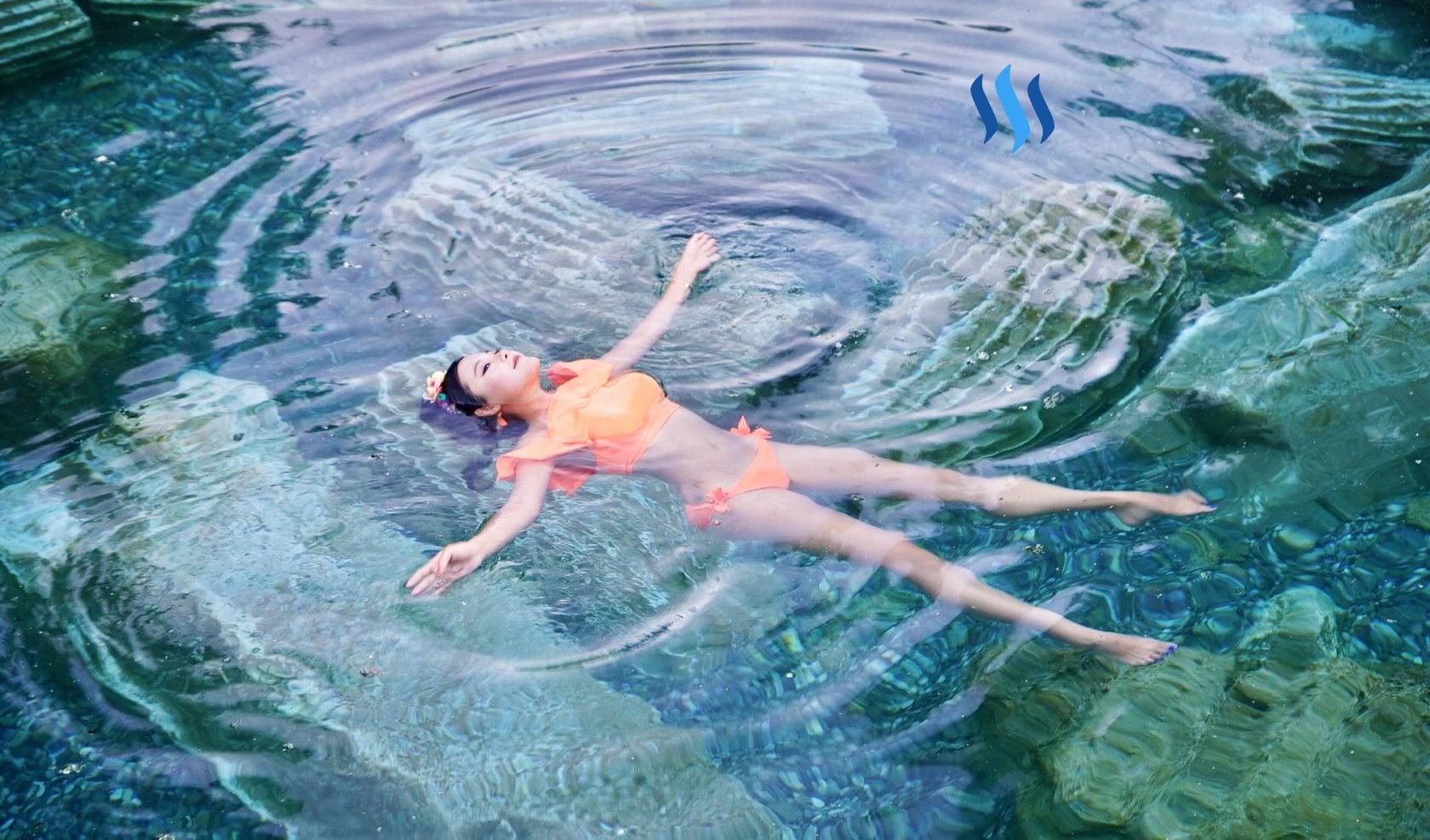
In today's edition of Travel with Me, we'll be visiting the Antique Pool and Theatre, both very significant parts of the ancient city, Hierapolis.
In previous posts, we had a look at the necropolis of Hierapolis which was once the largest Necropolis in the Roman empire, and of course we visited the white travertine terraces of Pamukkale which have been used as a natural thermal spa for thousands of years.
The city itself was built just above the white travertine terraces and is a similar length to the white cotton like thermal cliffs. Both the Thermal Pool and Theatre are further inland up towards a shallow mountainous area of land. Even though it looks like a short distance on the map, there is actually quite a substantial walk between the thermal pool and the theatre. Not to mention a somewhat arduous climb!
Again, I would recommend renting a buggy or scooter to save time and avoid the risk of heat stroke. Especially if you visit in the summer months.
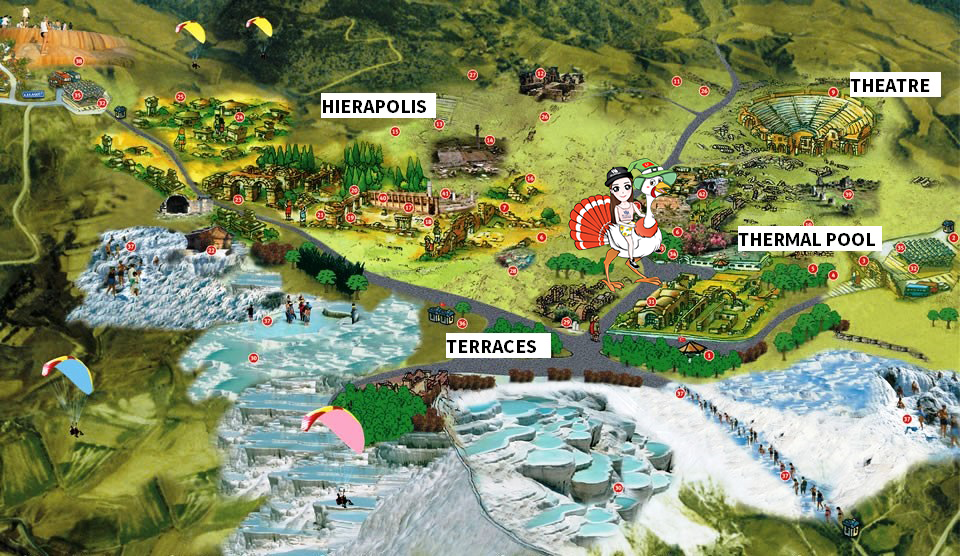
The Frontinus Avenue connects the Necropolis, Agora, the Latrine to the thermal pool and theatre. Along this avenue, you will find The Cathedral Church - one of the most important Christianity era structures of Hierapolis, as well as the Sanctuary Nymphaeum, a sacred gathering spot functioning as a reservoir, assembly chamber, and even weddings.
Some imagination will be required to see it in it's old glory, however, even in it's state of ruin, it is incredible to see walls and arches still extant and intact to this day.
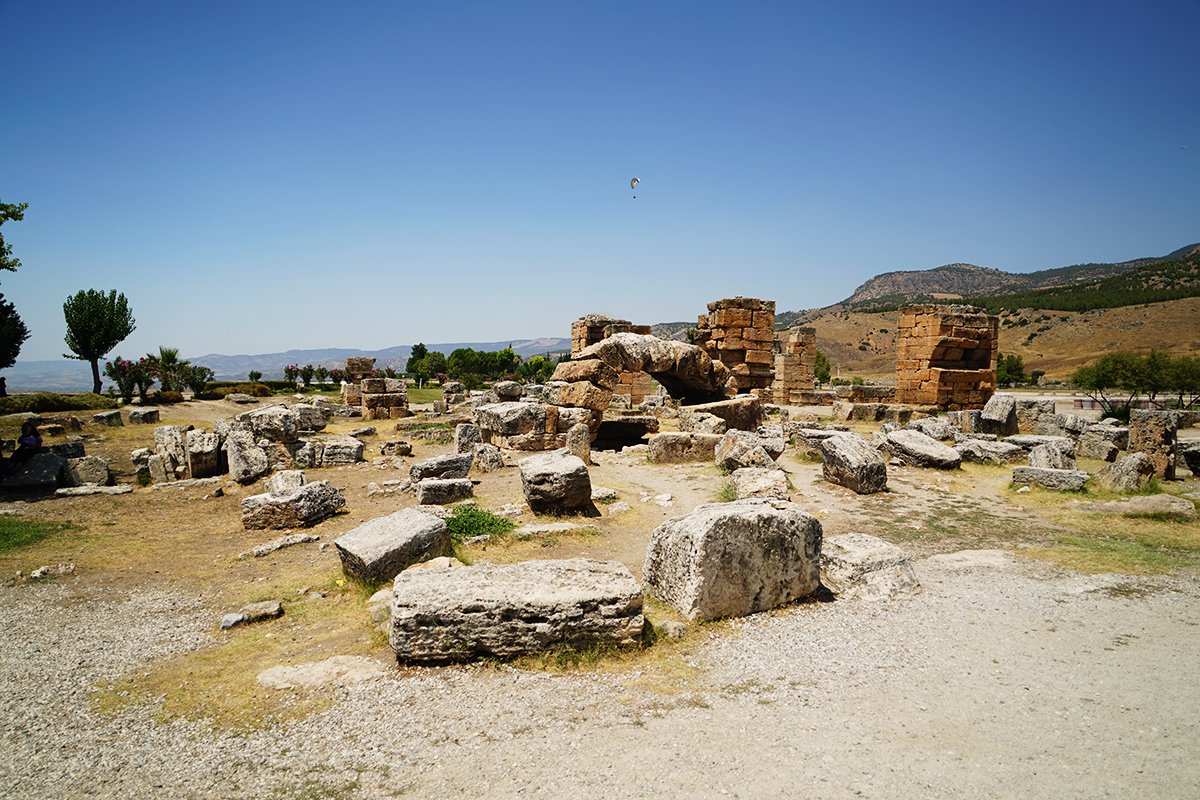
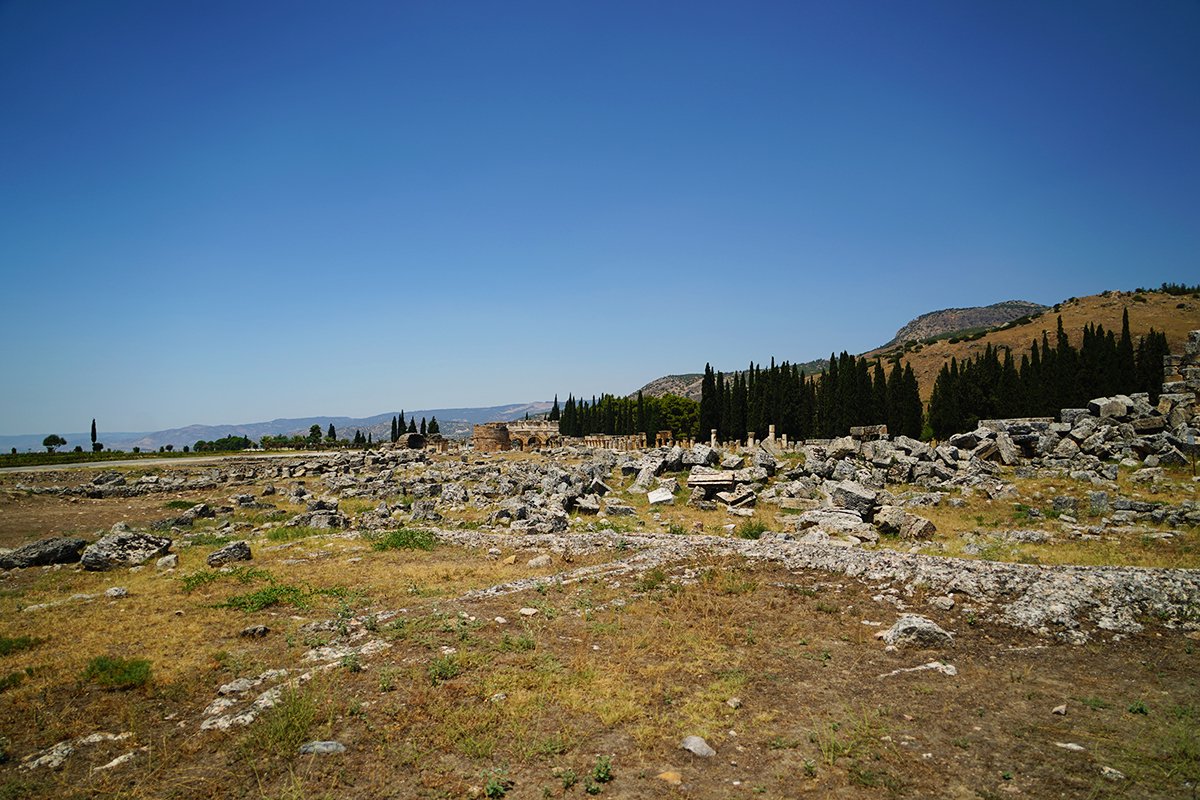
This is the entrance ticket to the whole site of Hierapolis and Pamukkale. Make sure you try visit the antique pools in conjunction with either the Necropolis or the travertine terraces as you will be charged a further entrance fee to the pool.
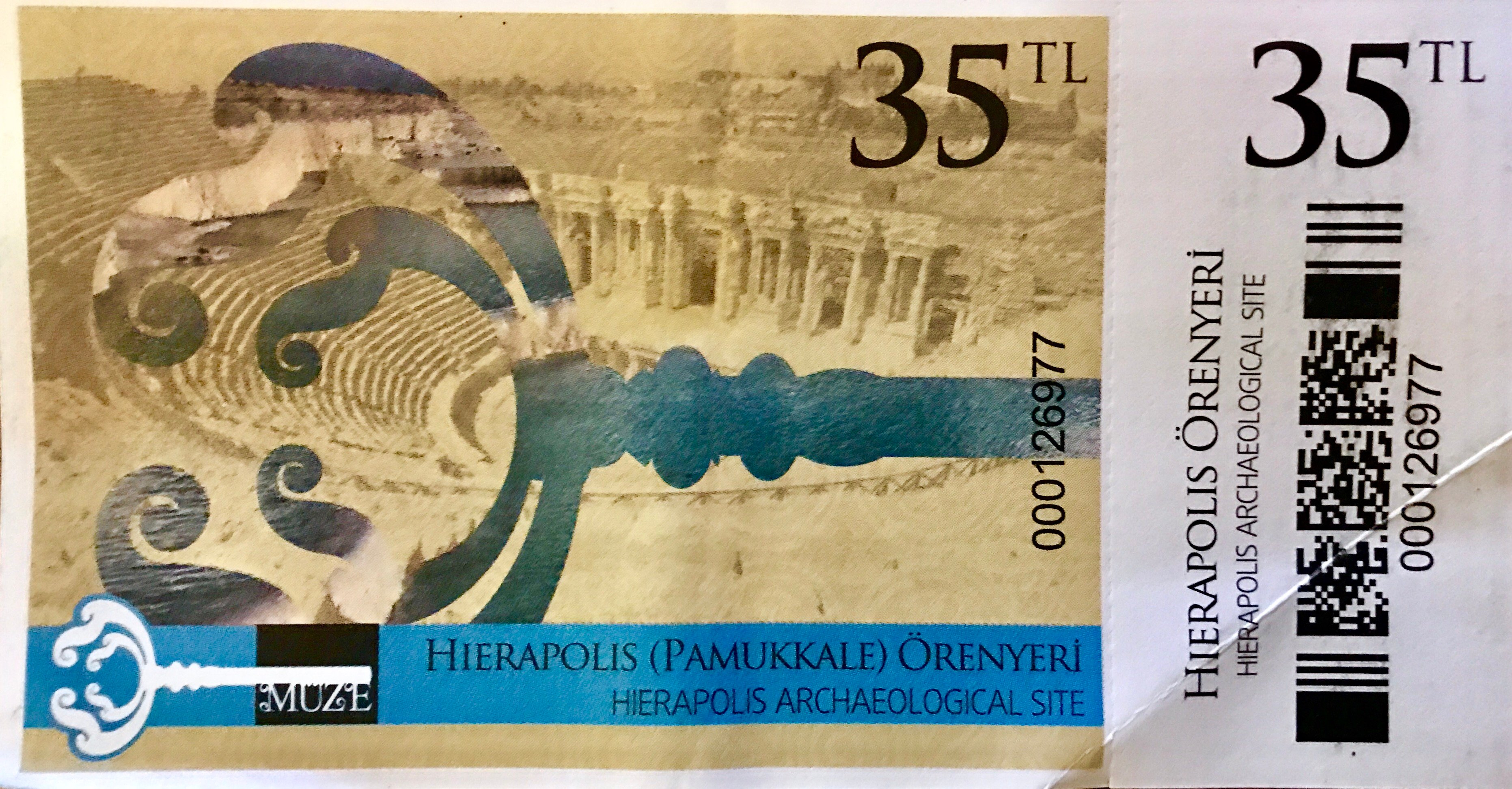
The Antique pool (Cleopatra's Pool)
The antique pool is often referred to as Cleopatra's Pool because it is alleged that Cleopatra herself bathed in these exact pools. In-fact, the state of the pools have changed dramatically throughout history as it's original form was without any of the stone columns and rubble stones which once constituted the Temple of Apollo.
Fed by hot spring water from deep within the mountains, the pools are a little more than room temperature but definitely not too warm. In-fact, it is a very pleasant temperature, especially coming in from the outside which was again above 40 degrees.
As mentioned earlier, the entrance to the Antique pools are a separate cost to the entrance fee of Hierapolis. Expect to pay some 35 TL for the privilege of dipping in the pool, and another 5TL for locker rental.
Around the pools, there are several stalls serving drinks and food as well as large seating areas with tables. This is probably one of the most modernised places of Hierapolis and despite this, some archaic pieces of history lie just beyond the edge of the garden area, awaiting our visit.
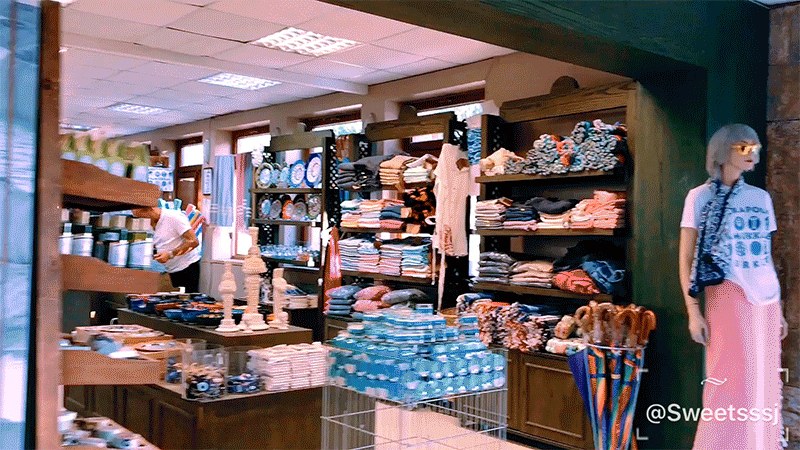
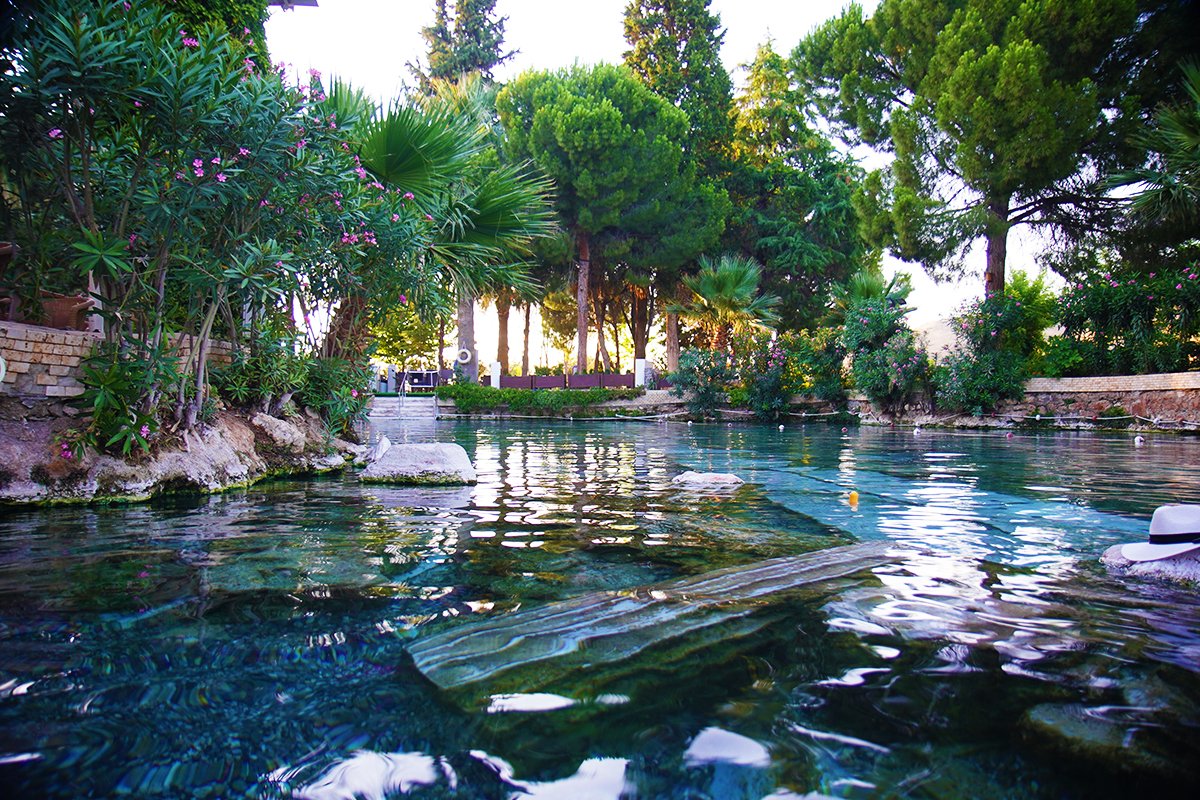
Our first glimpse of the antique thermal pool. I was stunned by all the Roman and Greek artefacts in the water. These were originally the Doric columns used in the Temple of Apollo. The temple fell due to earthquakes and the ruins were left in the pool.
With original temple ruins scattered all over the pool, it's surely a sacred place to swim. One can only imagine what it was like in the days that Cleopatra herself would swim in these exact waters.
Some say that the thermal water helps to revitalise the skin making a person look up to 6 years younger. Regardless of the supposed health benefits, it is an idyllic place to relax after a round in the sun. Most of the people tend to visit in the afternoon time so expect it to be quite busy until the early evening.
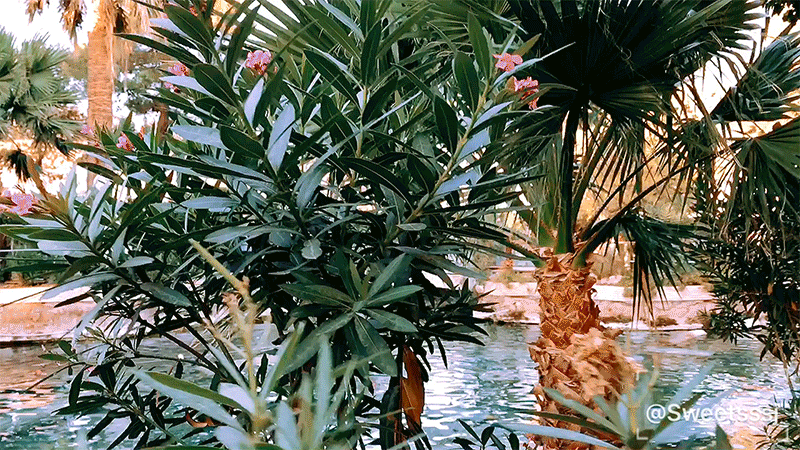
By the time that I was changed and ready to go into the water, most of the people we saw initially had already left. Leaving some great opportunities for photos!
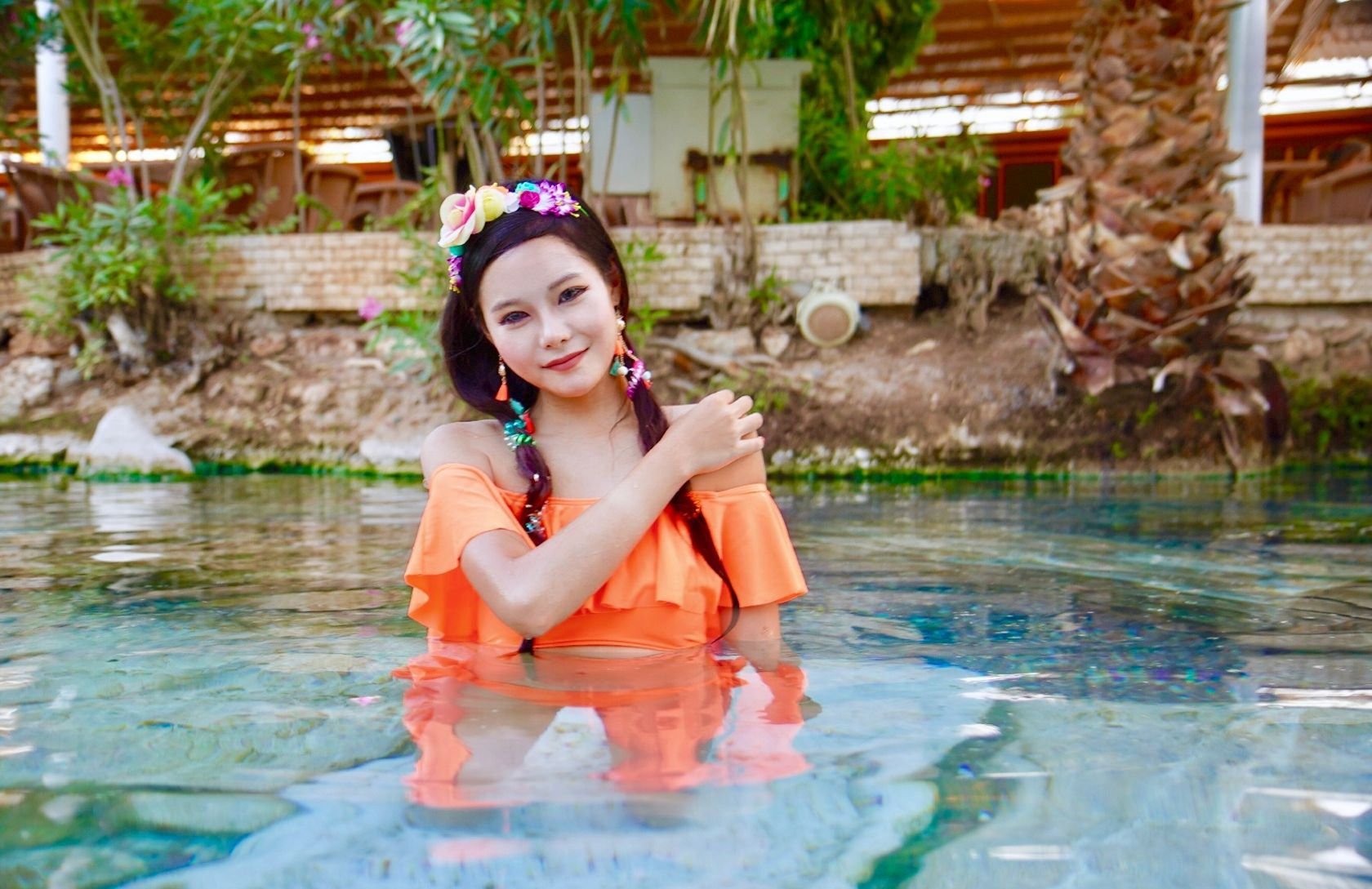
To enter the main pool area, you have to go from a side entrance with a stream that leads to the large pool. Passing under this little footbridge, I noticed a birds nest with some baby birds tweeting very loudly!
It's hard to believe that they've built a nest here, especially seeing as the pool is actually indoors!
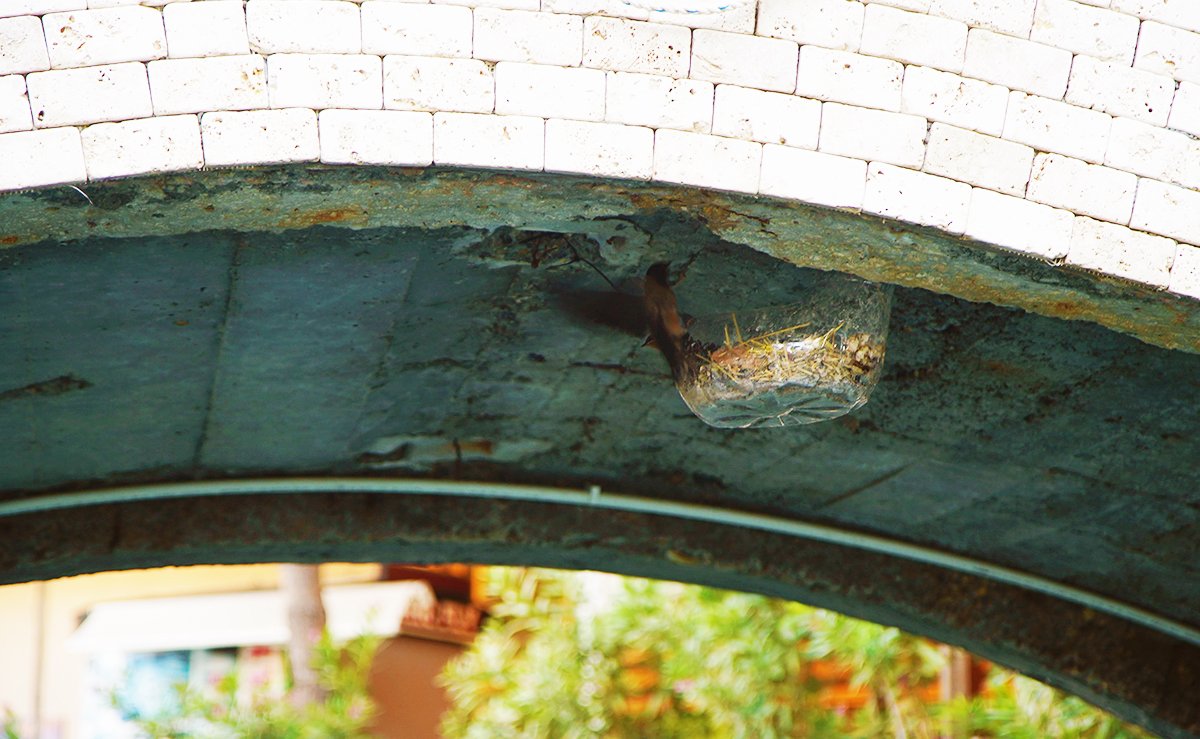
Every couple of minutes, the mother bird would return and feed the baby birds. Very cute!
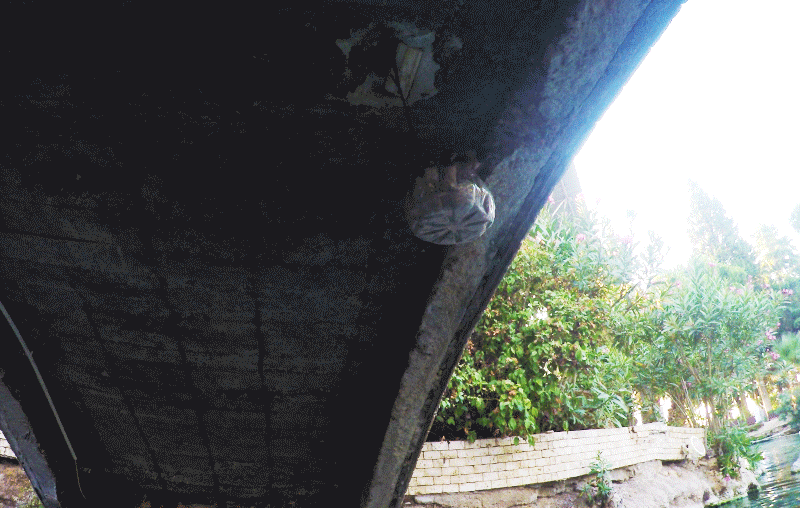
The anxious baby birds waiting to be fed..
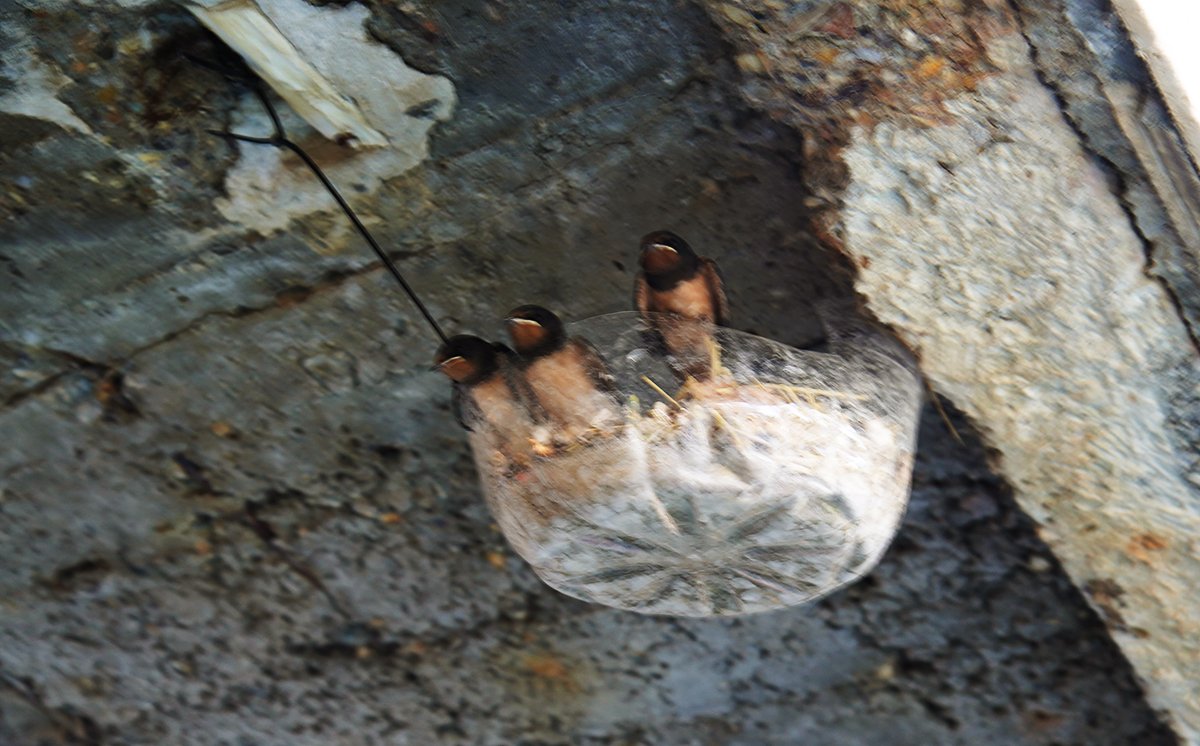
Because the pool has been modernised, the entire pool complex is actually indoors. Lush greenery surrounds the sacred pool, whilst a continuous supply of mineral-rich fresh water is pumped in and out of the pools. Aside from the modernisation and landscaping, the marble columns, and plinths are exactly as they were when they fell.
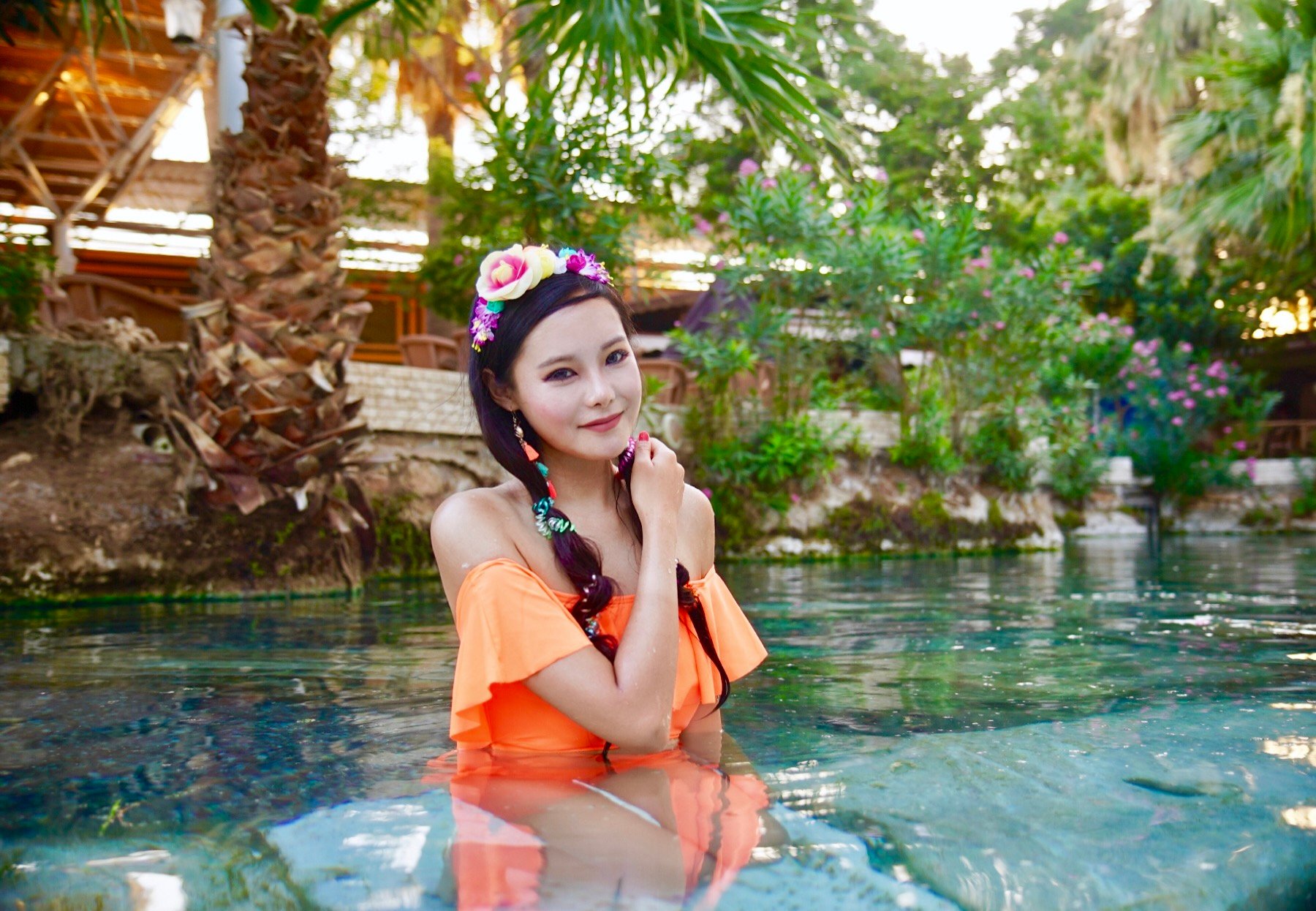
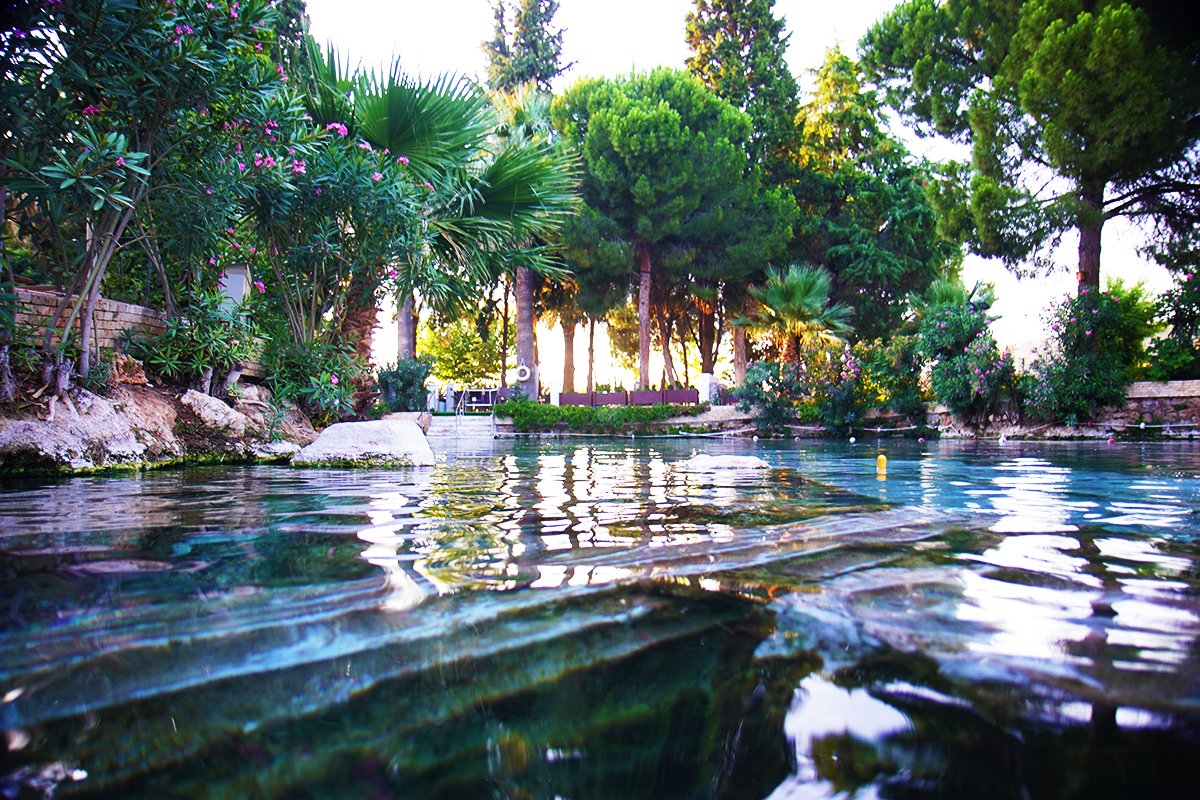
With so many artefacts spread out in the pool, it's actually quite difficult to "swim", most probably you'll sit and bathe in the luke warm water.
It's shallow enough that children can come in the pool too, just be careful not to strike one of the big stones or columns whilst moving around.
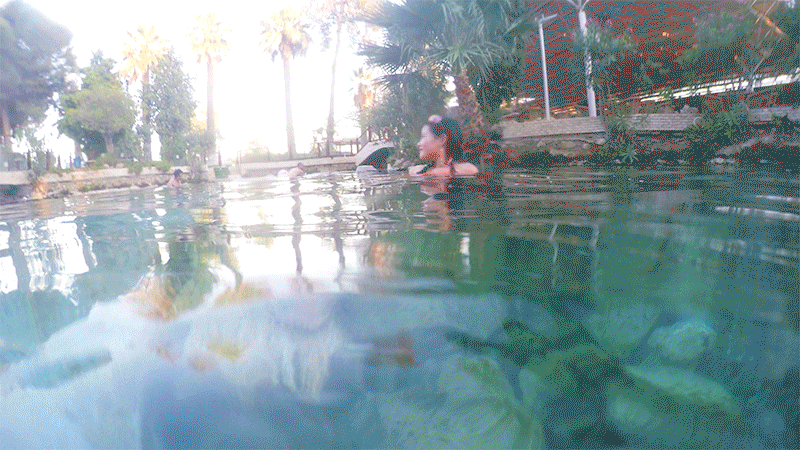
Tania showed me how to do a starfish on my back. And here I am just about doing it!
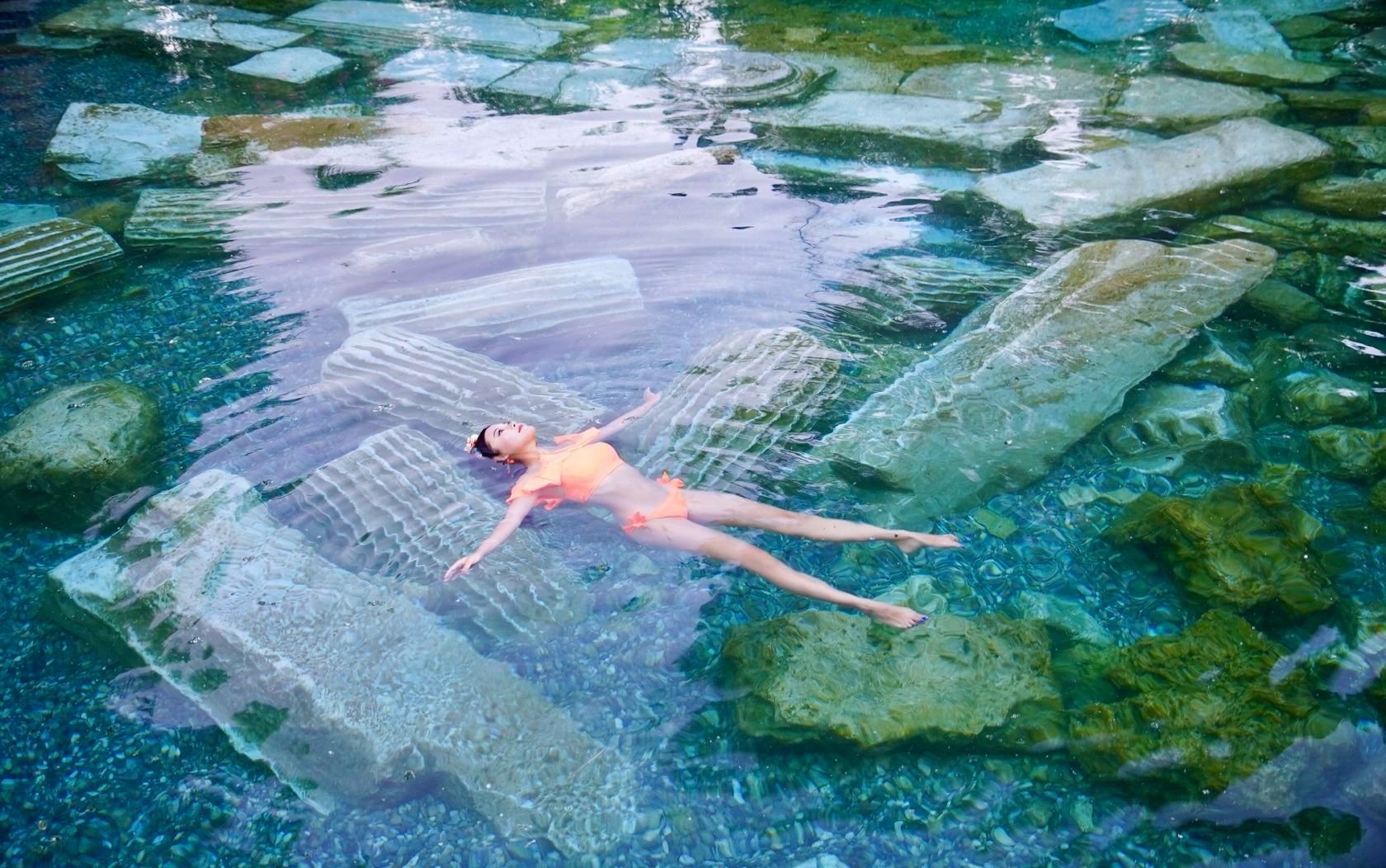
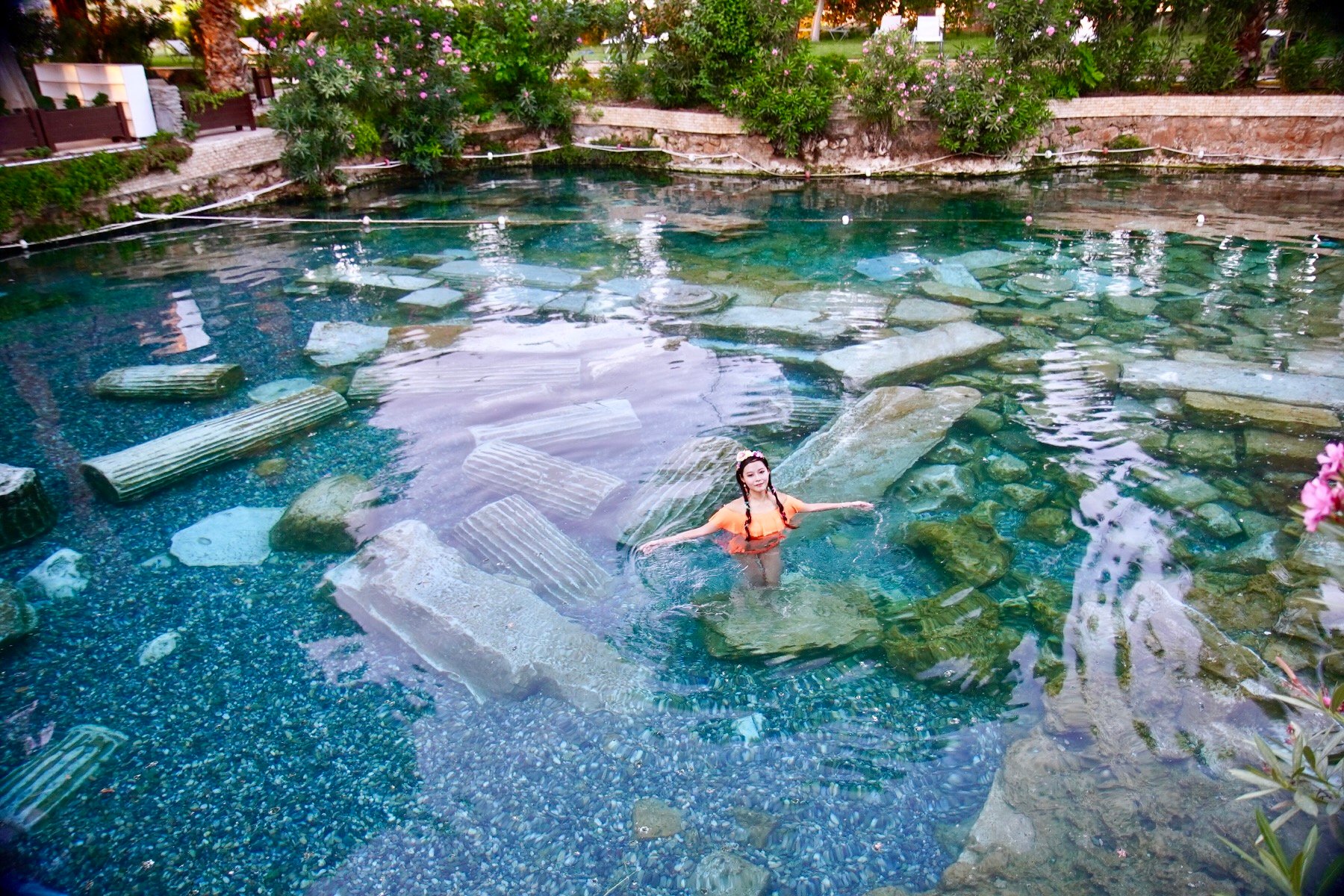
And now, together!
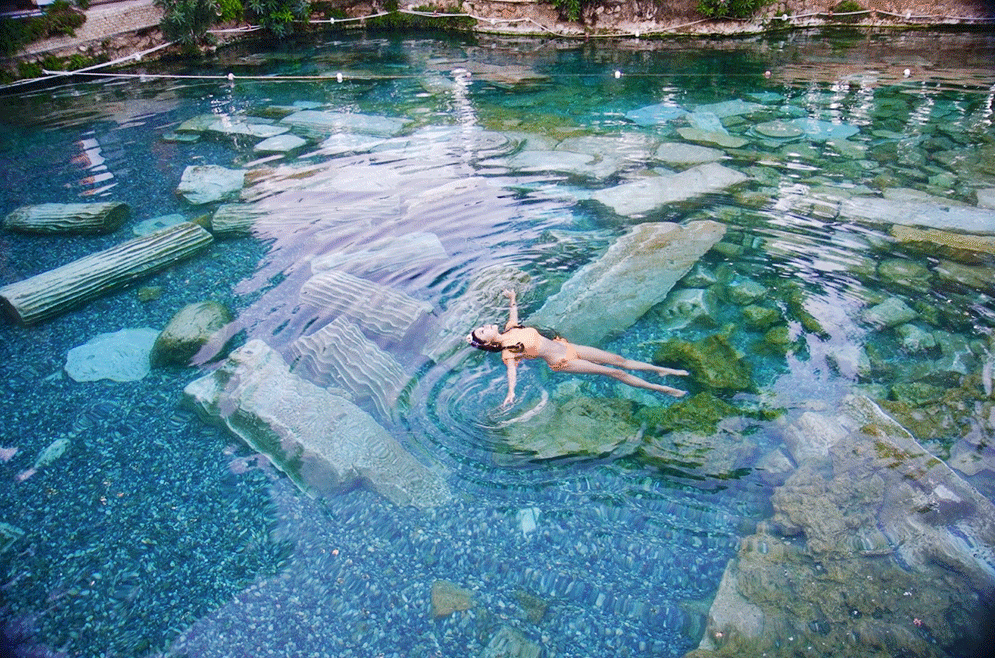
The Hierapolis Museum
This is one of the towns largest structures and prior to it's function as a museum, the building erected as a Roman bath in the 2nd century. It wasn't until 1984 that the building was converted for use as a museum to house artifacts recovered from excavations in Denizli as well as the surrounding region.
Most of the works exhibited in this museum were found in Hierapolis and belong to the Hellenistic and Roman eras, but there are also prehistoric artifacts from Beycesultan as well as period works that have arrived from near by ancient towns such as Laodiceia, Colossae and Tripolis.
What you'll see below, are three indoor venues of the baths, which now house the museum exhibits. Please forgive me as I do not know the details of each, and there are thousands of items. Do however enjoy the pictures!
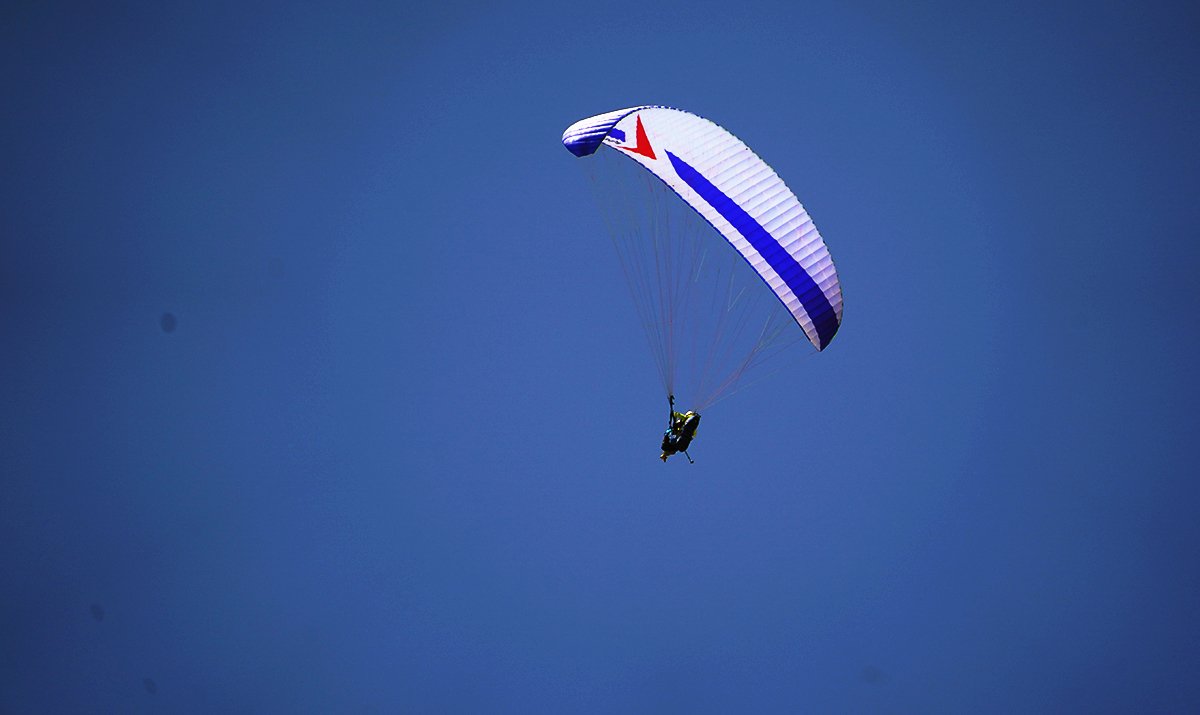
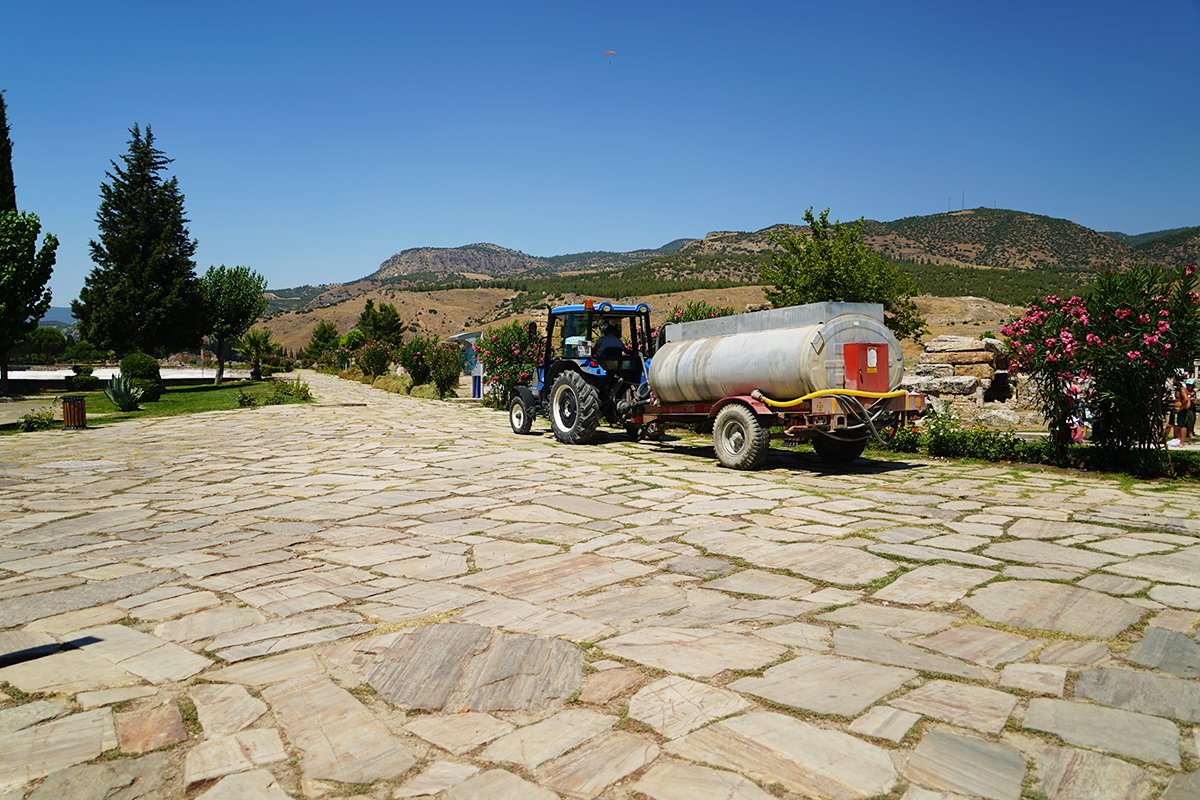
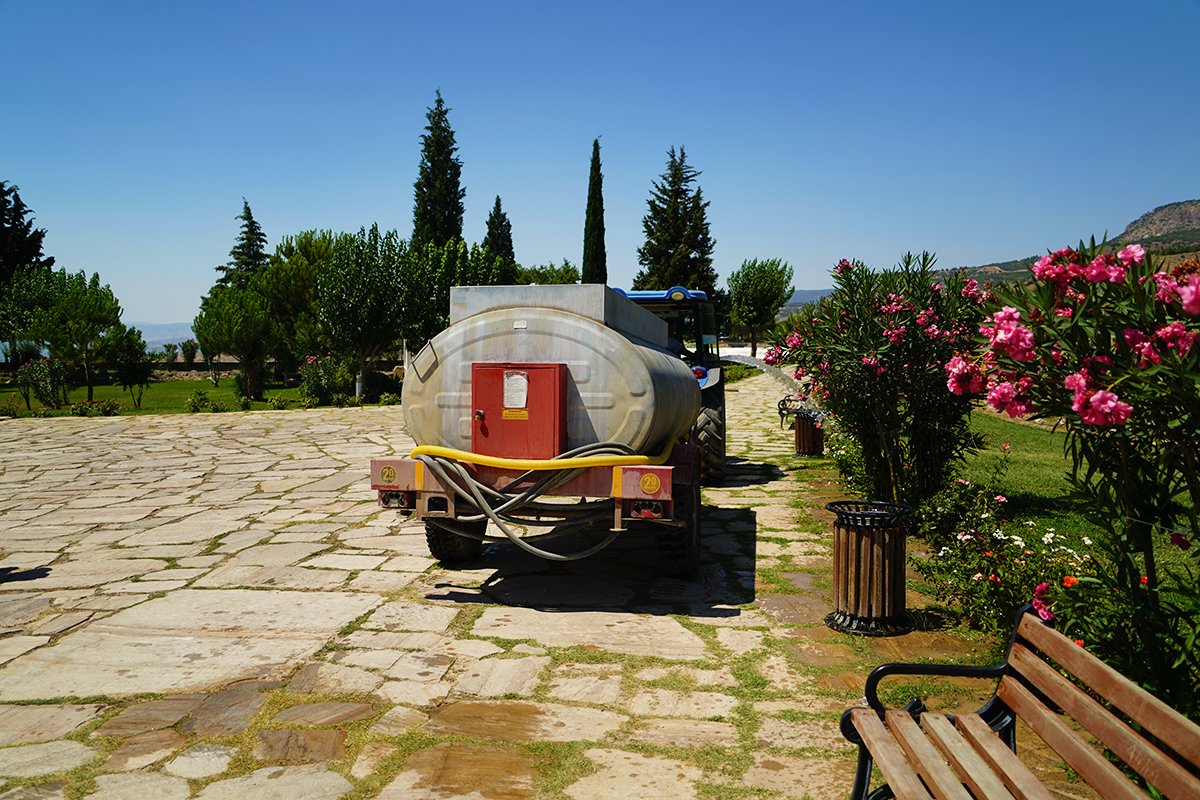
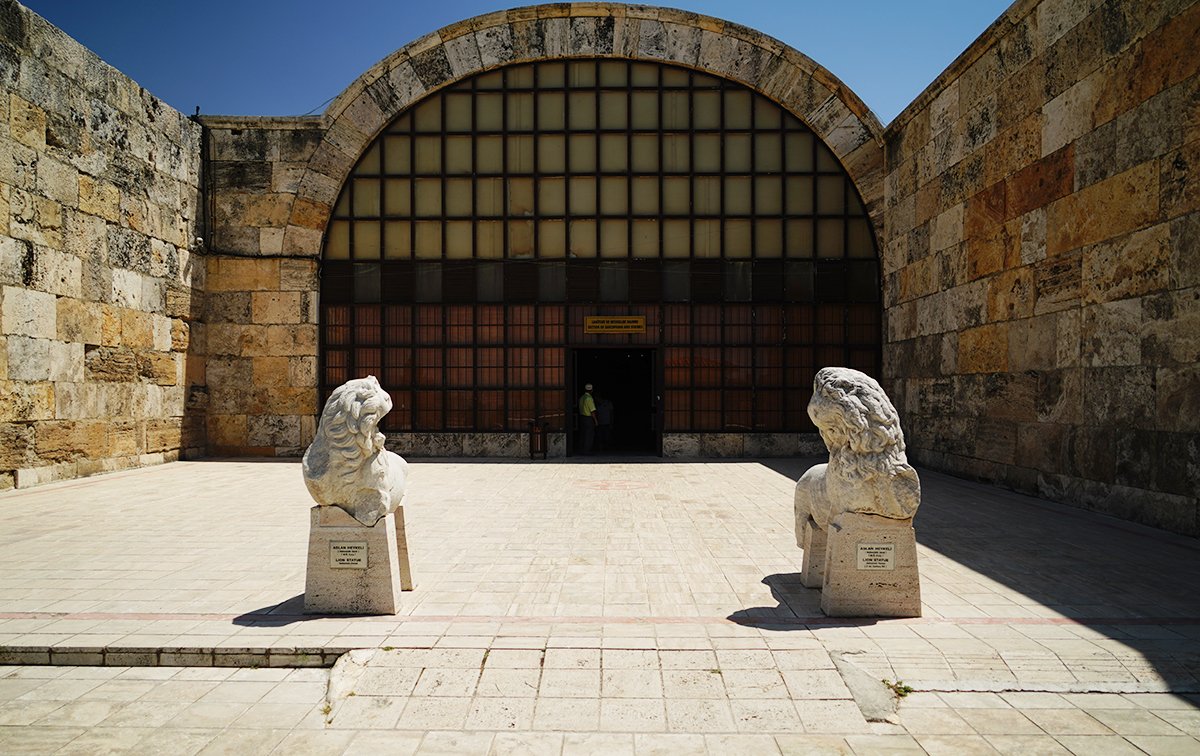
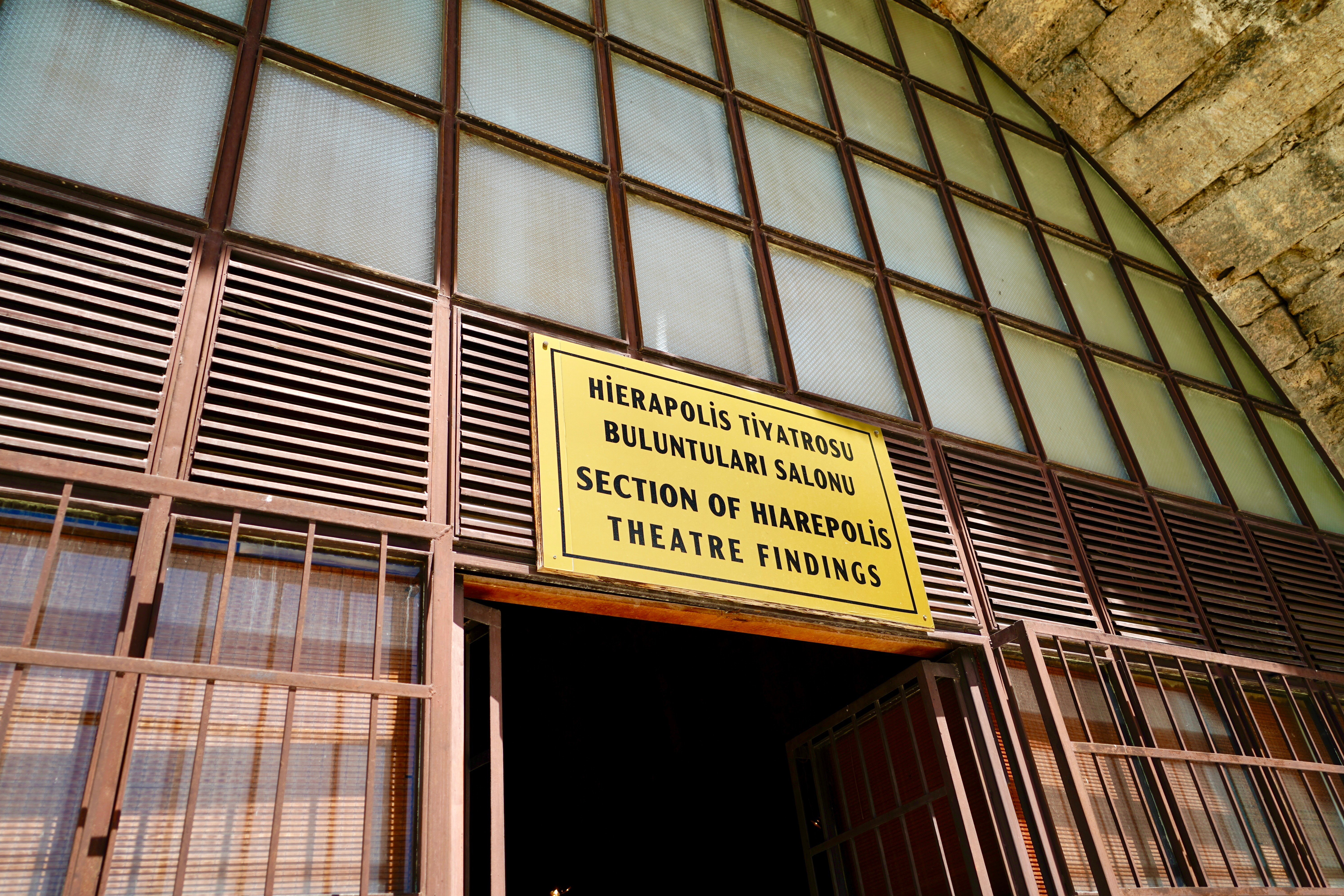

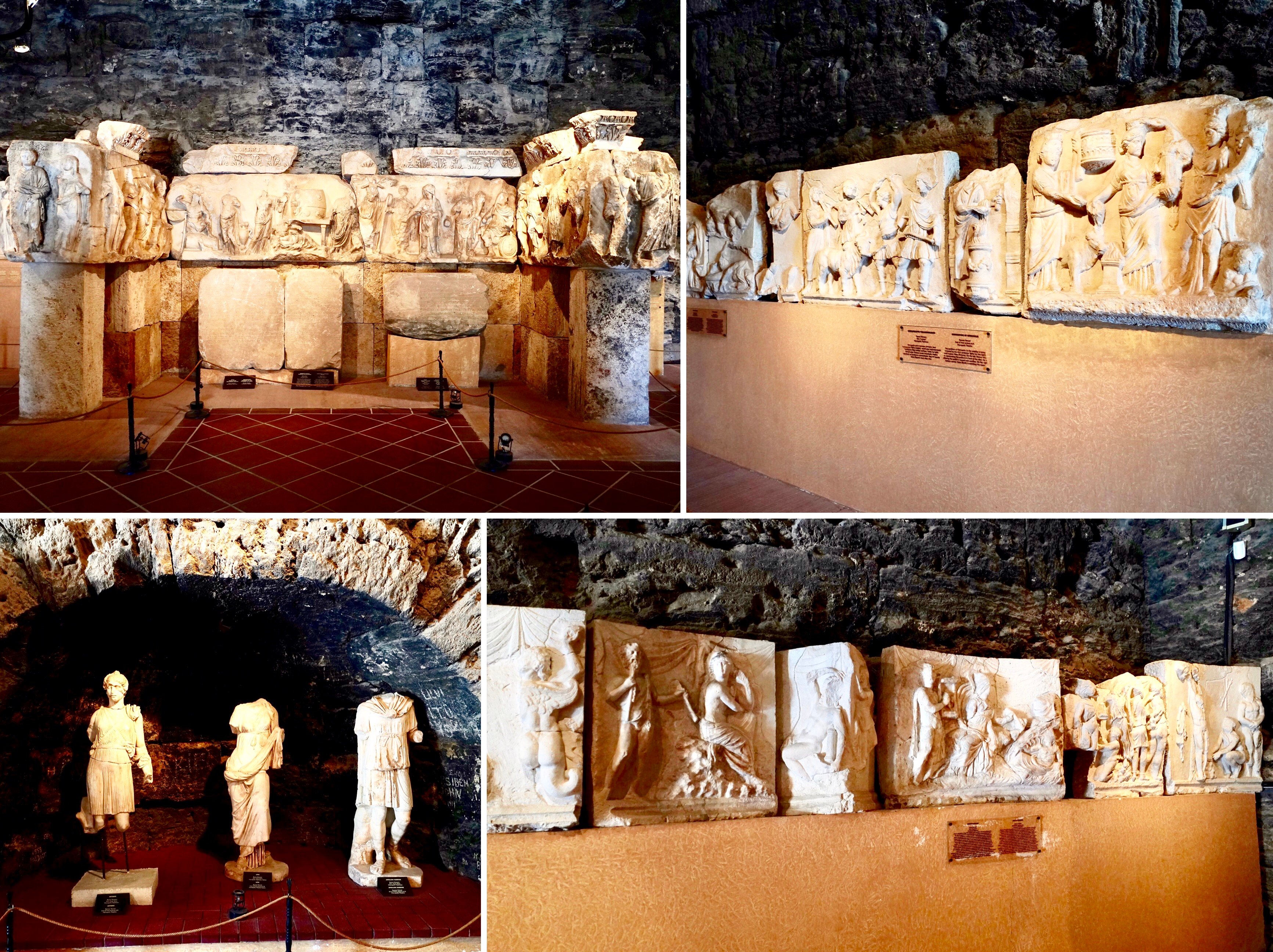
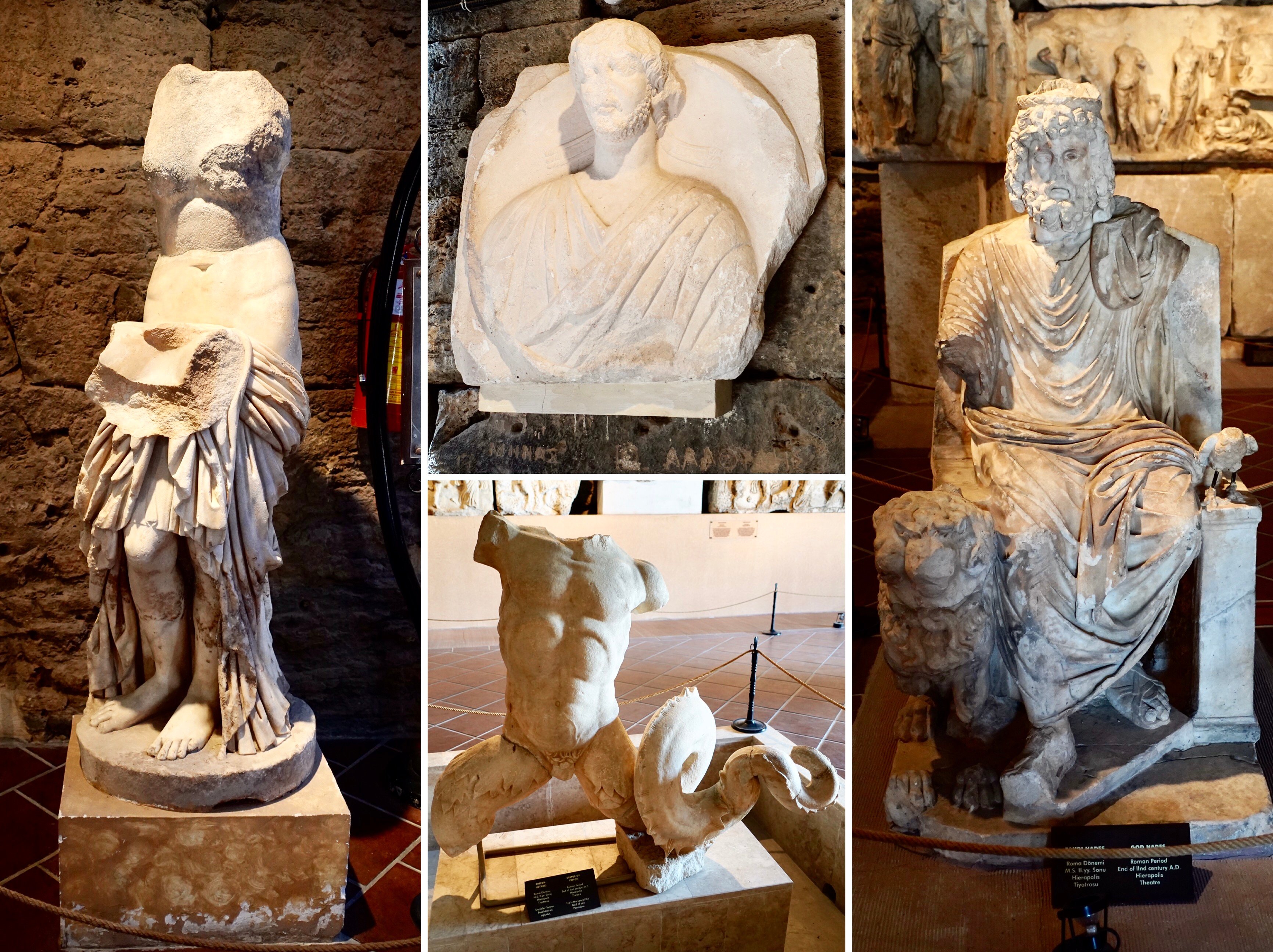
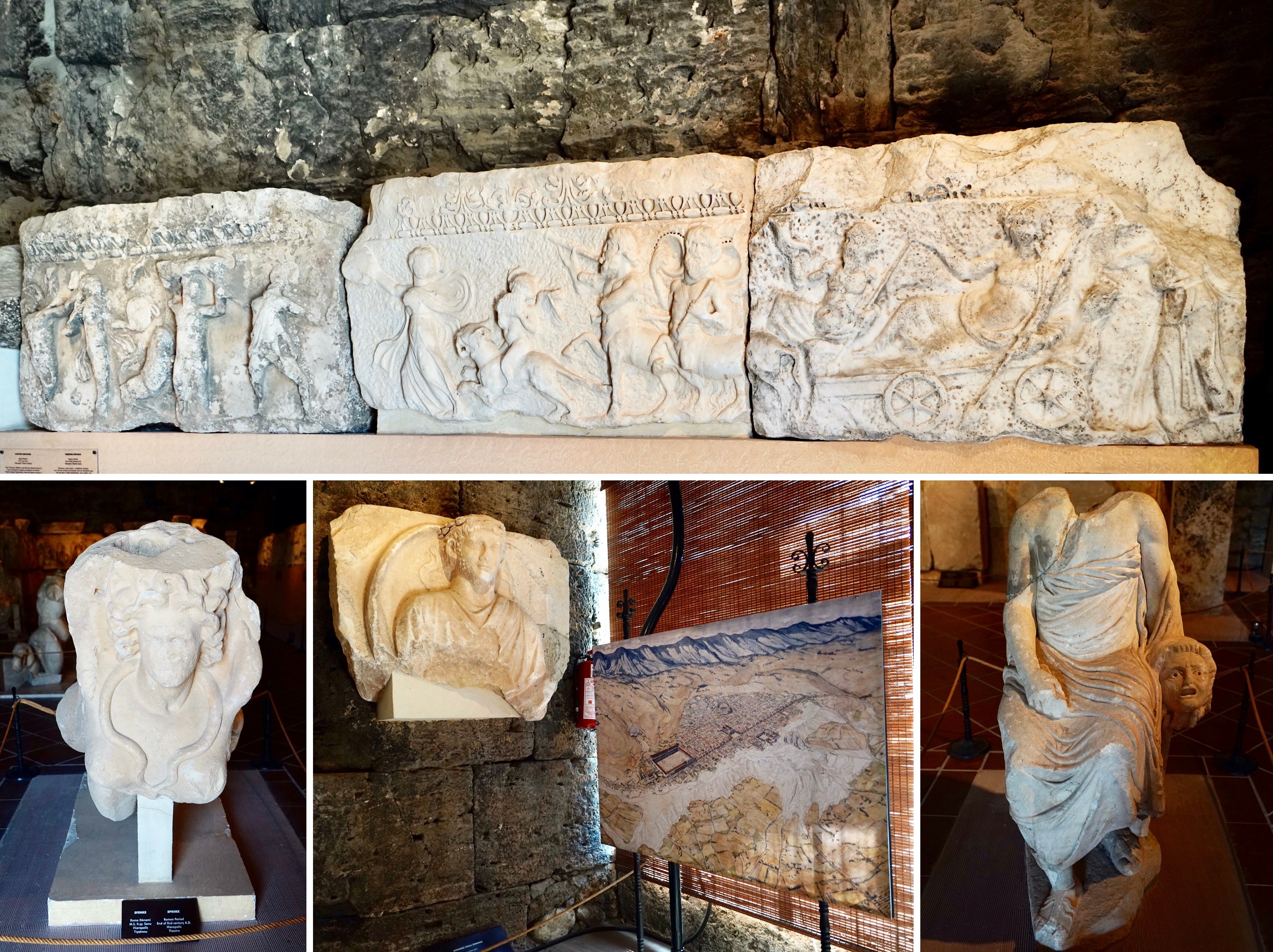
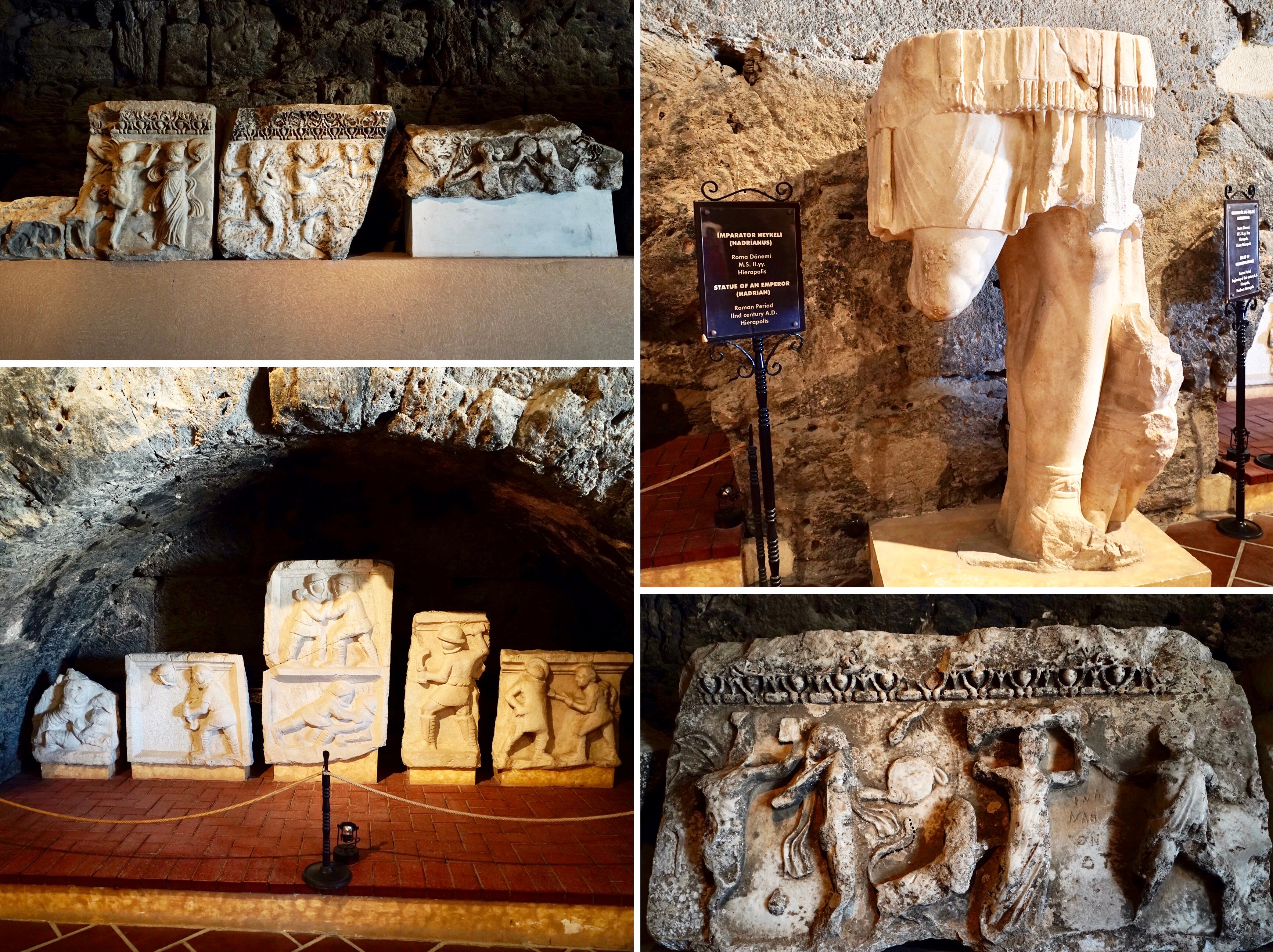
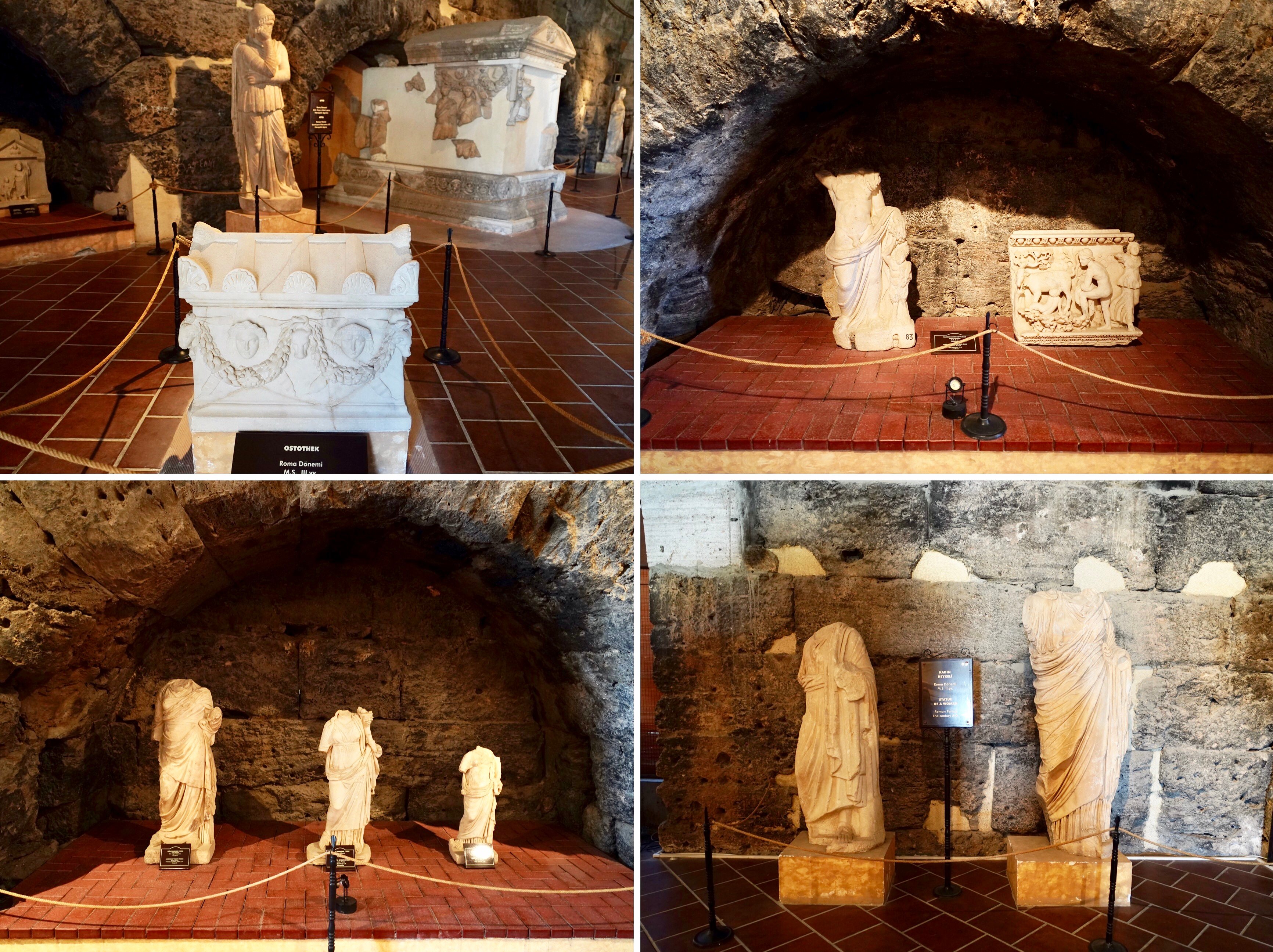
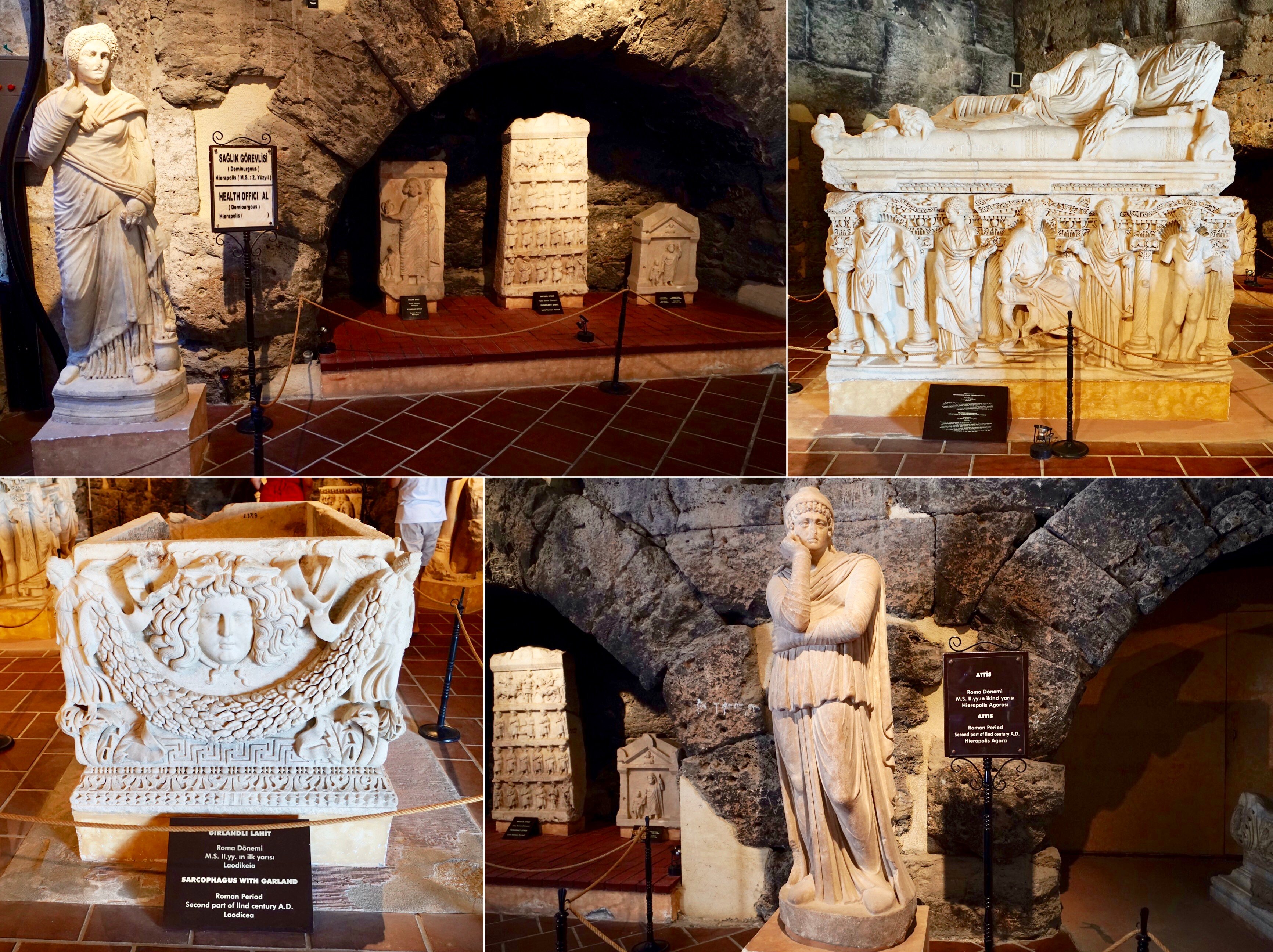
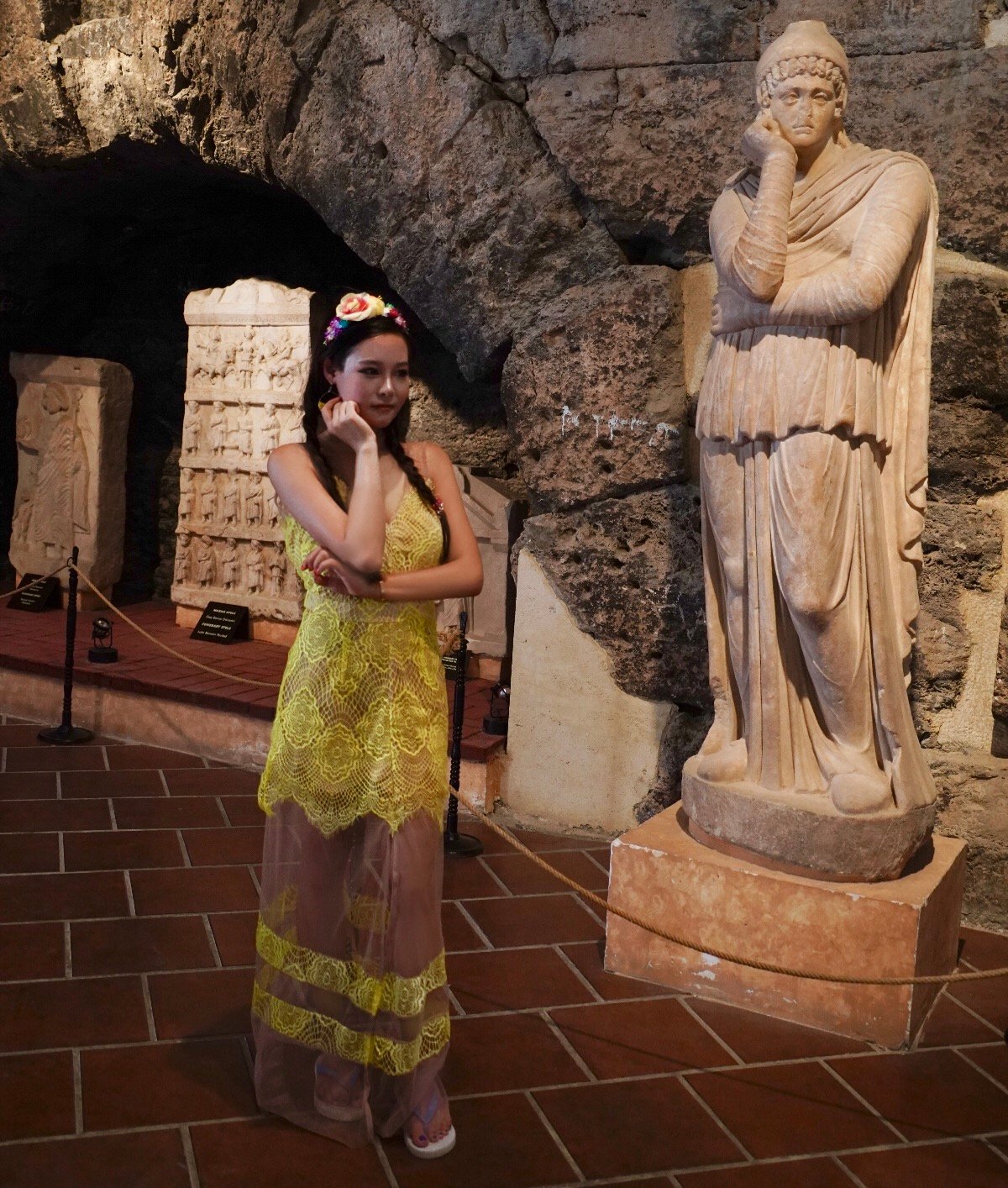
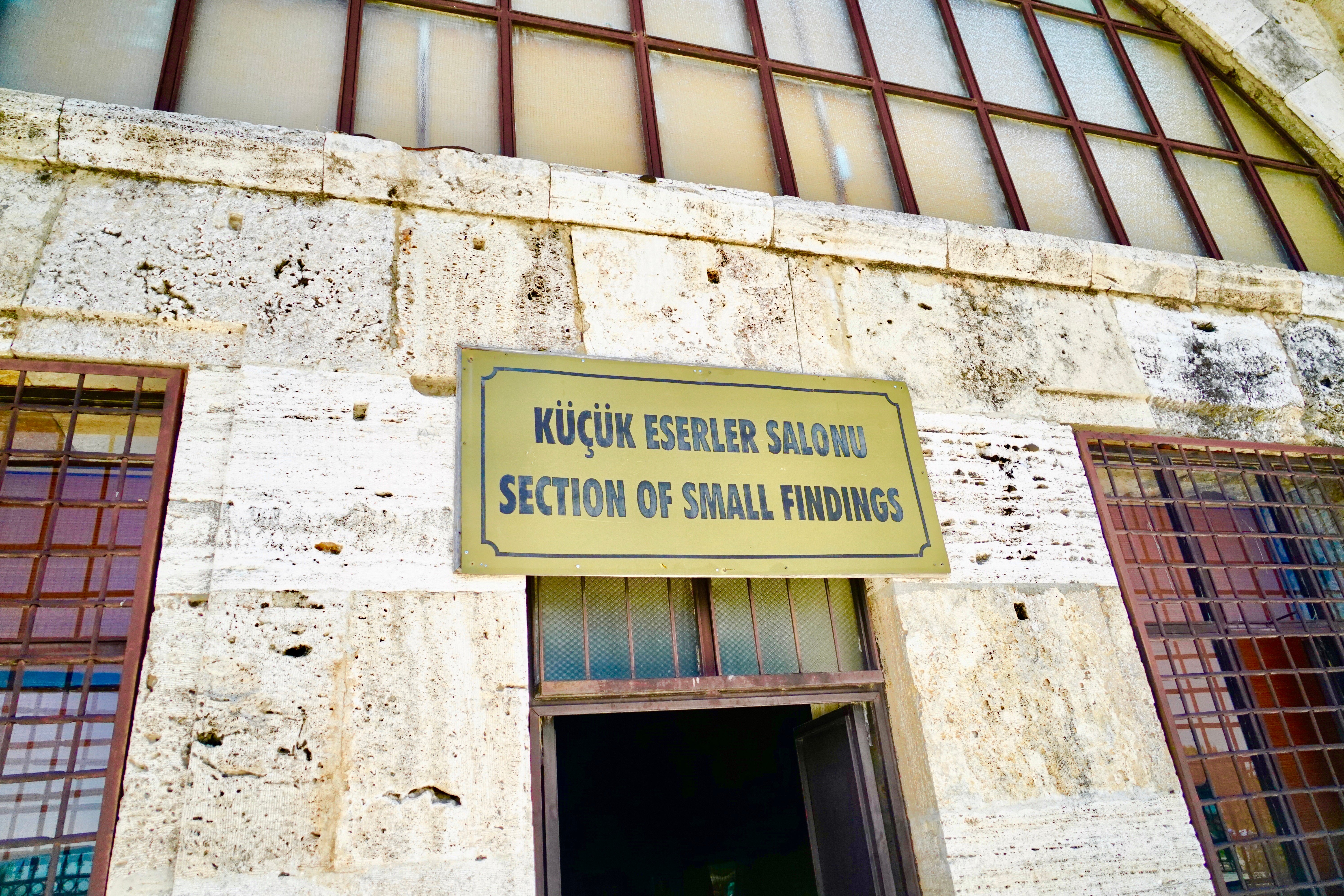


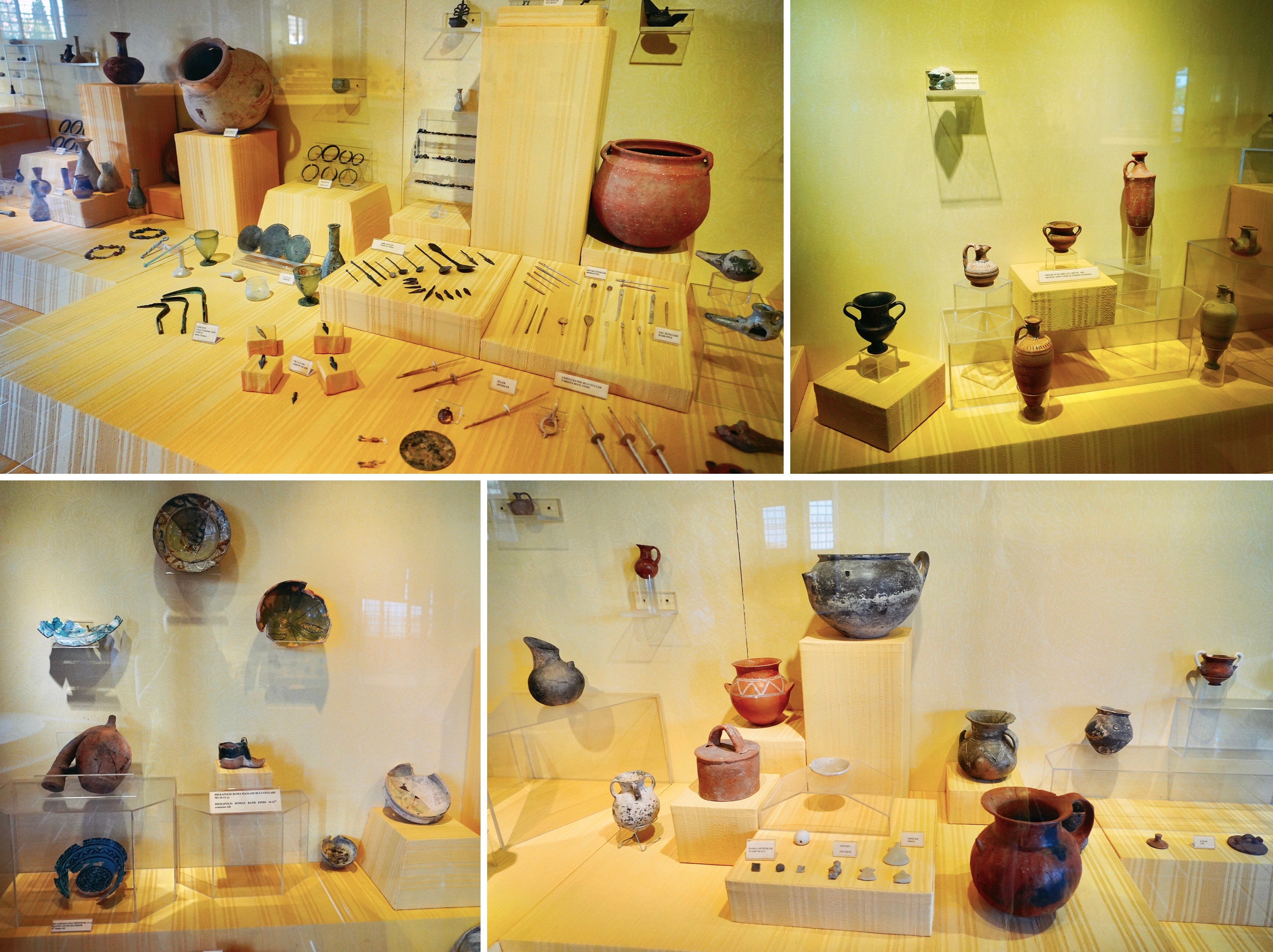


The Theatre
In every ancient city, there was almost always a theatre where stories and acts were played to a very enthusiastic audience. This form of drama was hugely popular in both the ancient Greek and Roman times and would have been the main way stories were told. This is in contrast to reading the very same stories.
The theatre that we find in Hierapolis was originally located further North. The original one was destroyed in 60 A.D and the new one began just two years later in it's current position on the hill slope.
It wasn't until 206 A.D that the theatre was completed and by then, it had crossed several eras of reign. From the Flavian era in 62 A.D, to the Hadrian era (A.D 117-138), all the way to the Severius era in A.D 206.
Because the theatre was built on a steep point on the hill. It sports some of the best views of the valley, as well as the town centre. This was perhaps an intentional design, but can also be explained by the lack of engineering know-how at the time to build free standing buildings of this size and scale. (They usually leaned on the side of mountains / hills)
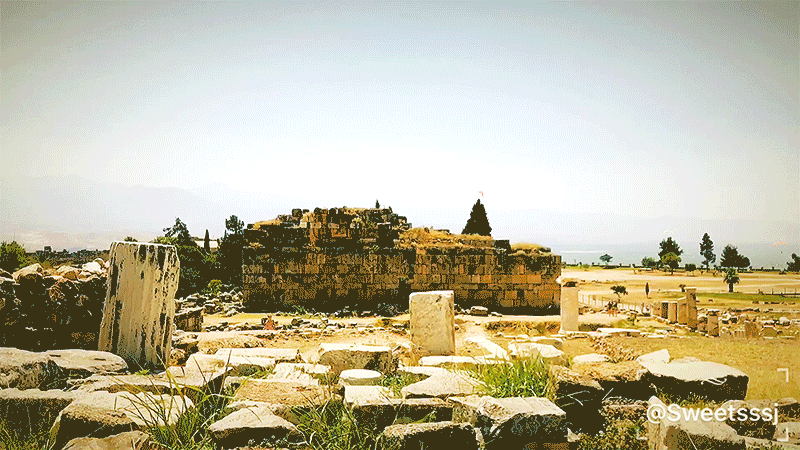
The new theatre as we see it today, has a 91m long facade. It's cavea is comprised of 50 rows of seats which are then divided into seven sections with eight intermediate stairways.
The diazome divided the cavea into two and was entered via two vaulted passages.
The lower part is where the marble exedra is found. This is where the town's VIPs would normally be. Whilst marble was used for some of the upper and lower sections, limestone was used as the primary material as it was cheaper.



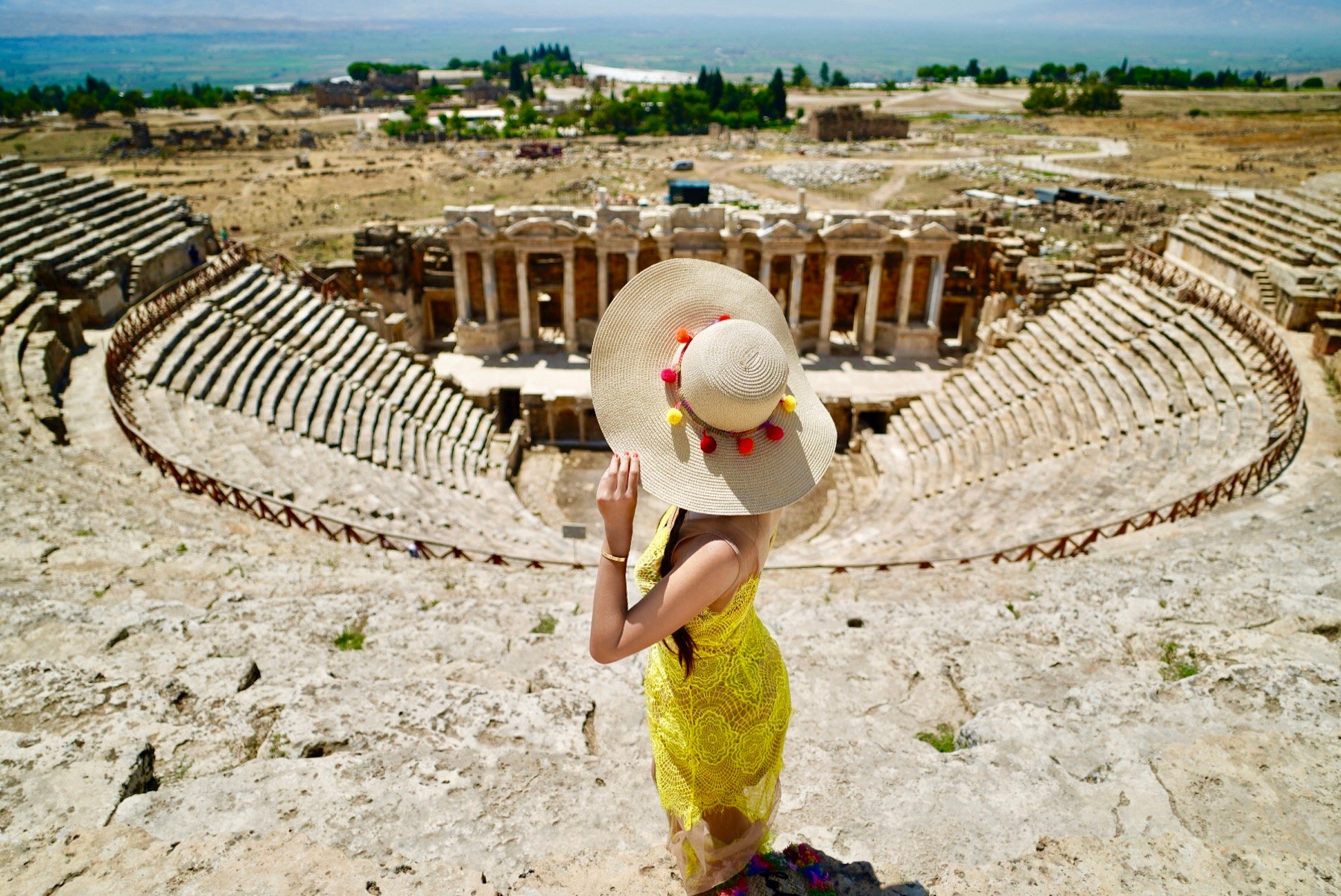
Sunset
After a long day, I was more than looking forward to having some quiet time to just relax and enjoy the spectacular view. Sunset was imminent and we decided we would sit by the travertine terraces and watch the sun down before leaving.
It's a little bit risky because there are no lights in the ancient city, and once the sun was down, there was very little visibility to even walk back to the main entrance. However, views from atop of the Pamukkale town and nearby town of Denizli were spectacular. Most of the people had vacated the premises already and we felt like we had the whole place to ourselves.
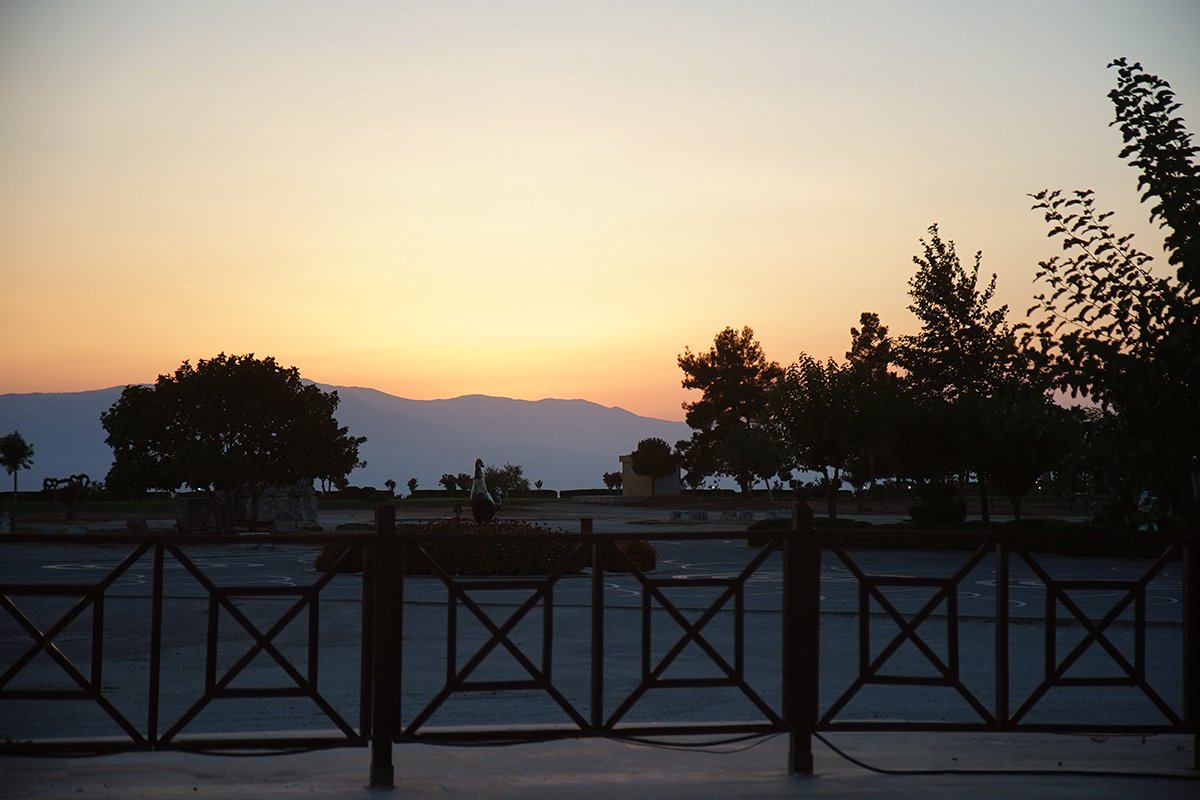
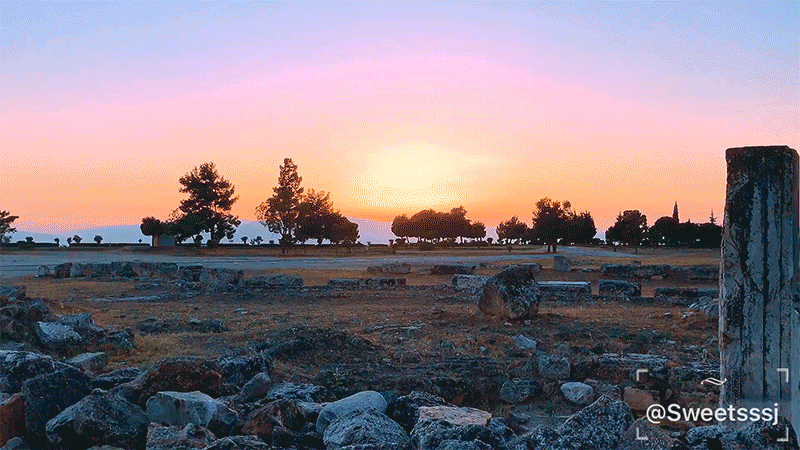
After sundown, we decided to go back up to the theatre to see what it was like at night.
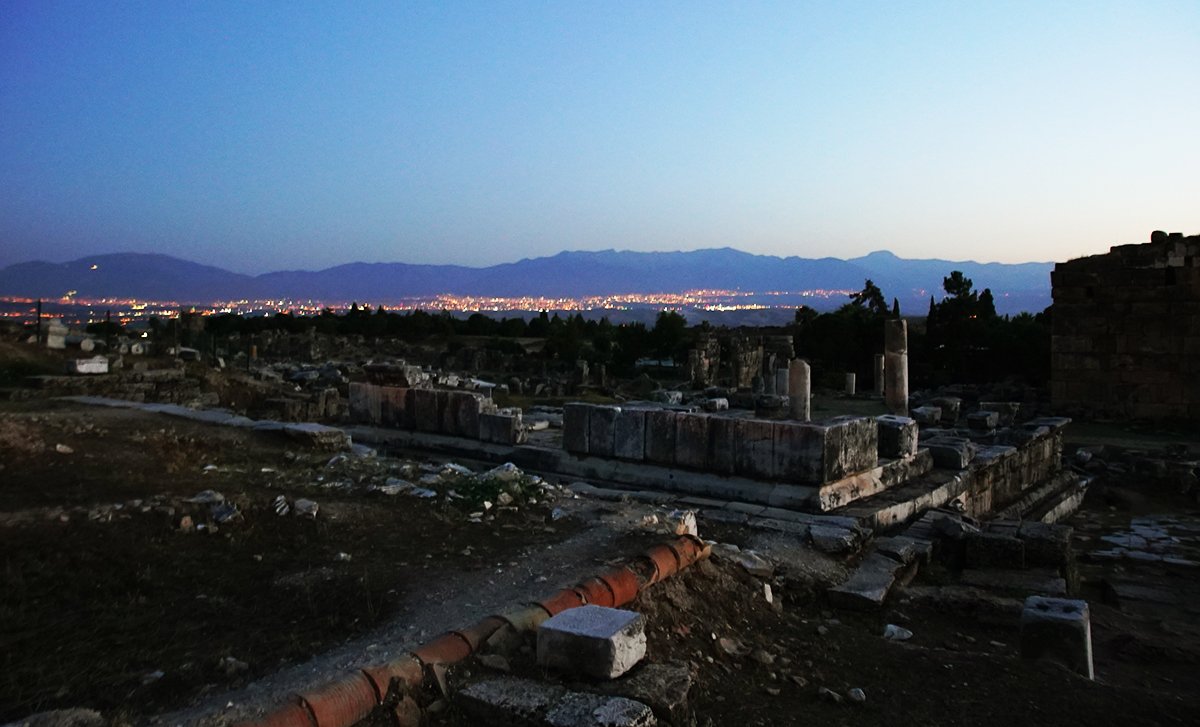
As we walk back up towards the theatre, I noticed for the first time, the ruins just below the theatre.
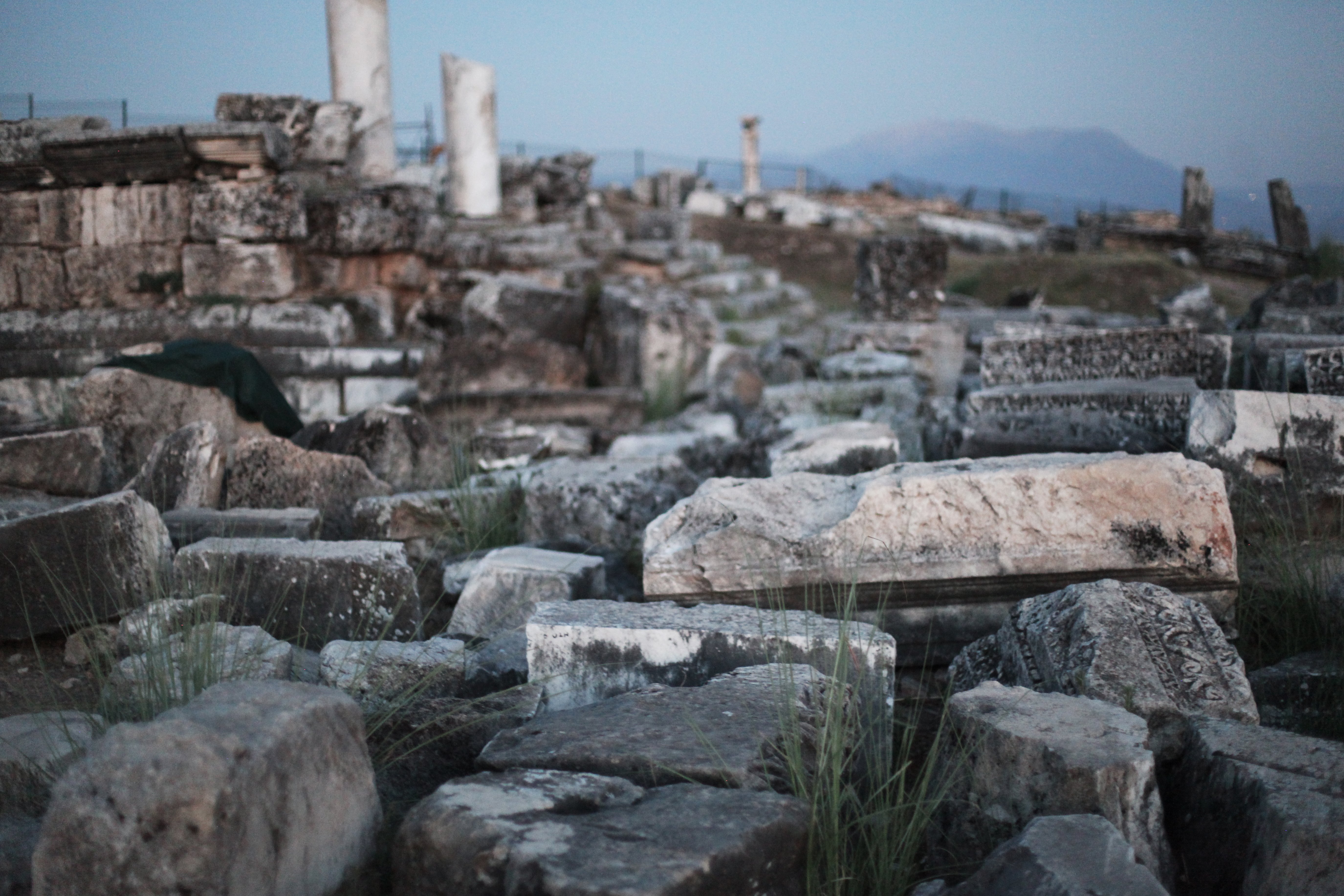
They are actually the sanctuary of Apollo, the Plutonion, and the House with the Ionian Column Capital.
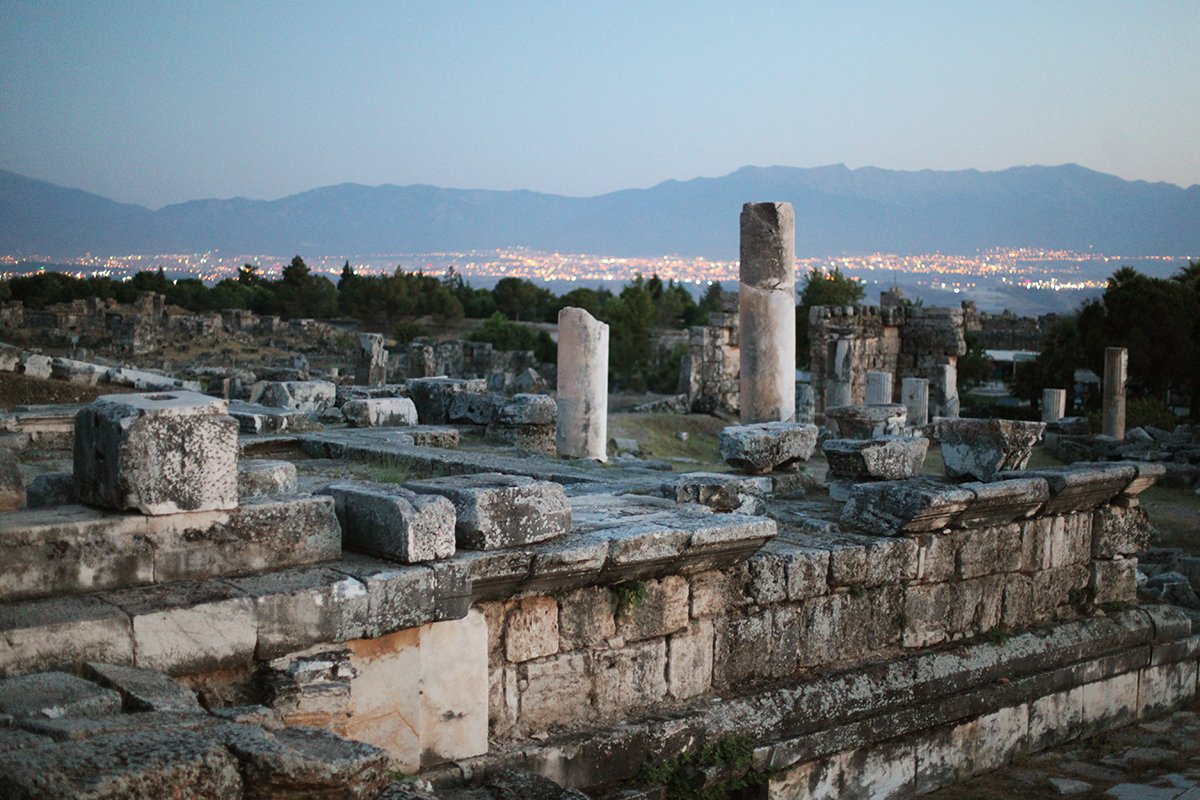
The theatre looks quite different at night. A few lights illuminate the entire theatre sparingly, leaving what remains of the natural light for seeing everything else.
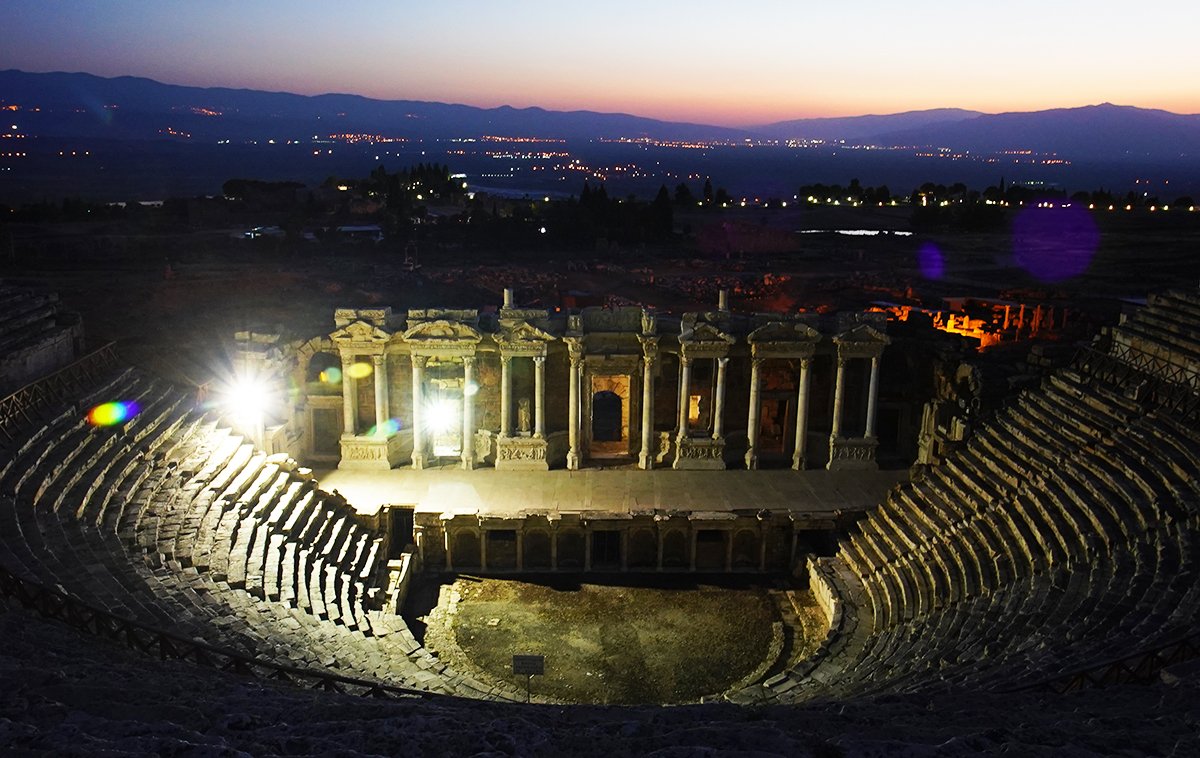
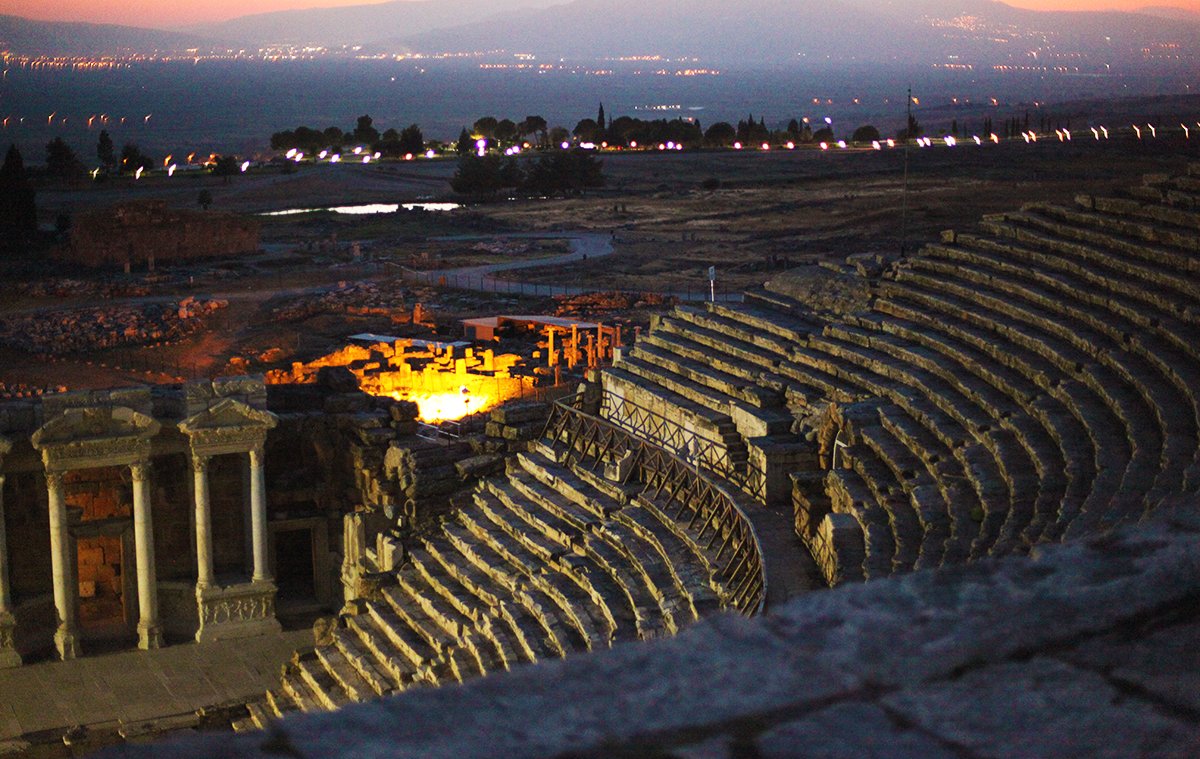
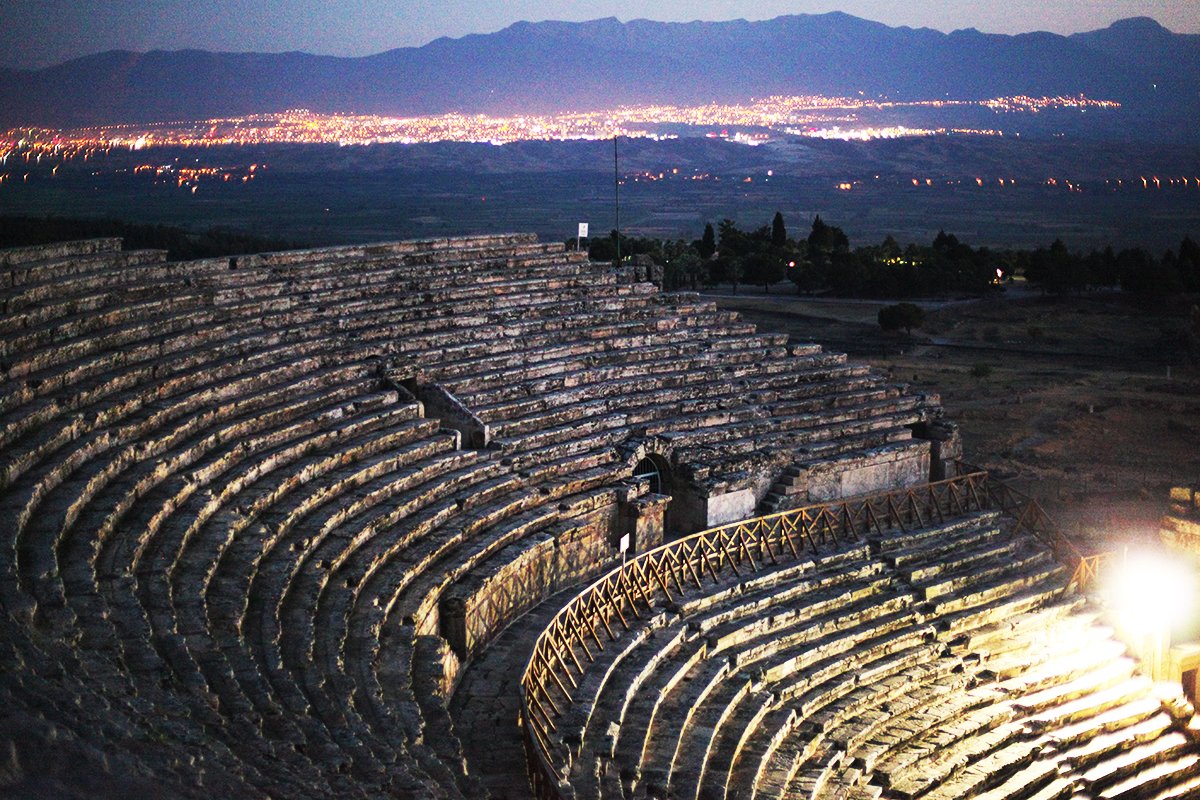
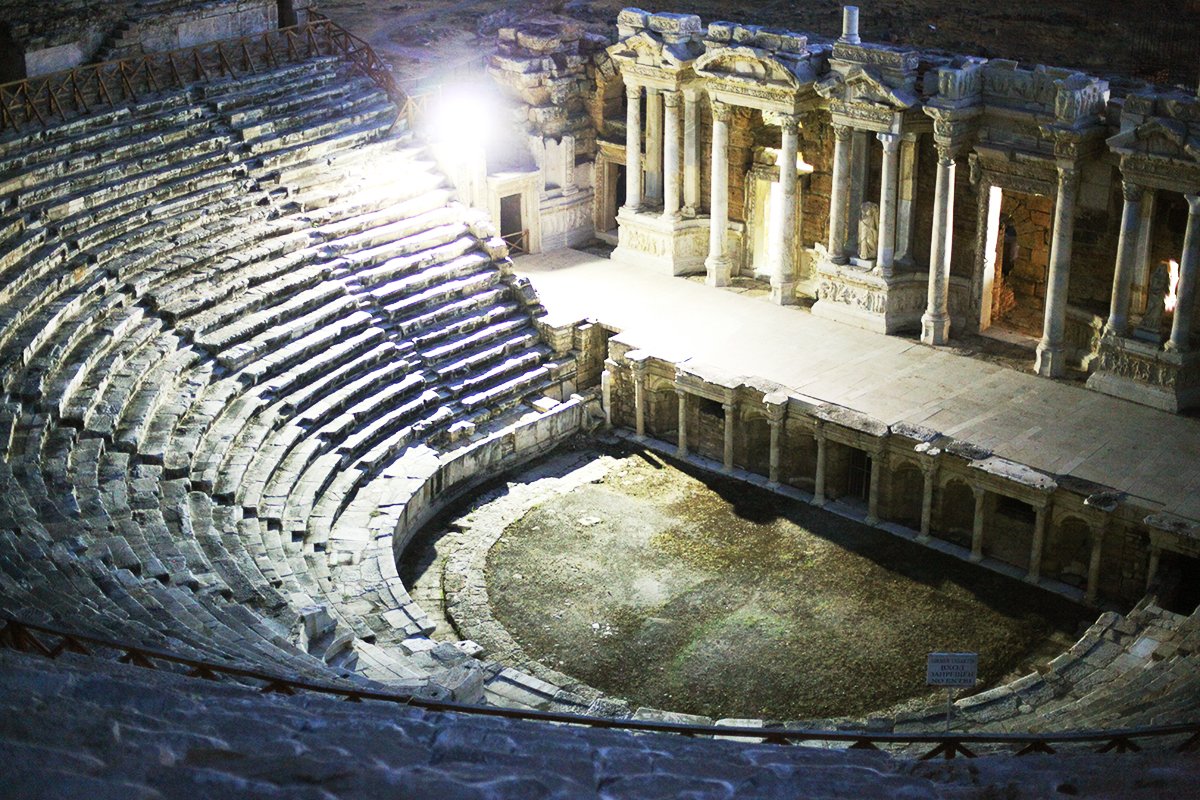

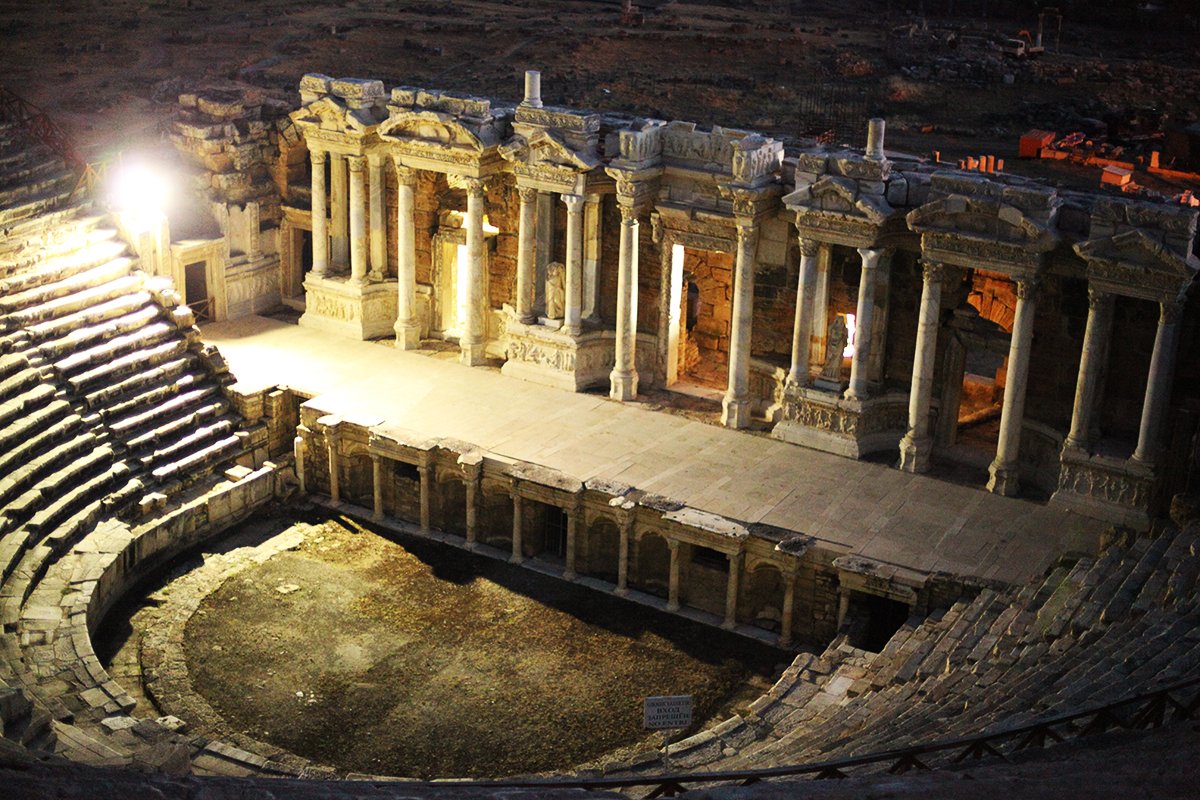


Souvenir store and other tidbits
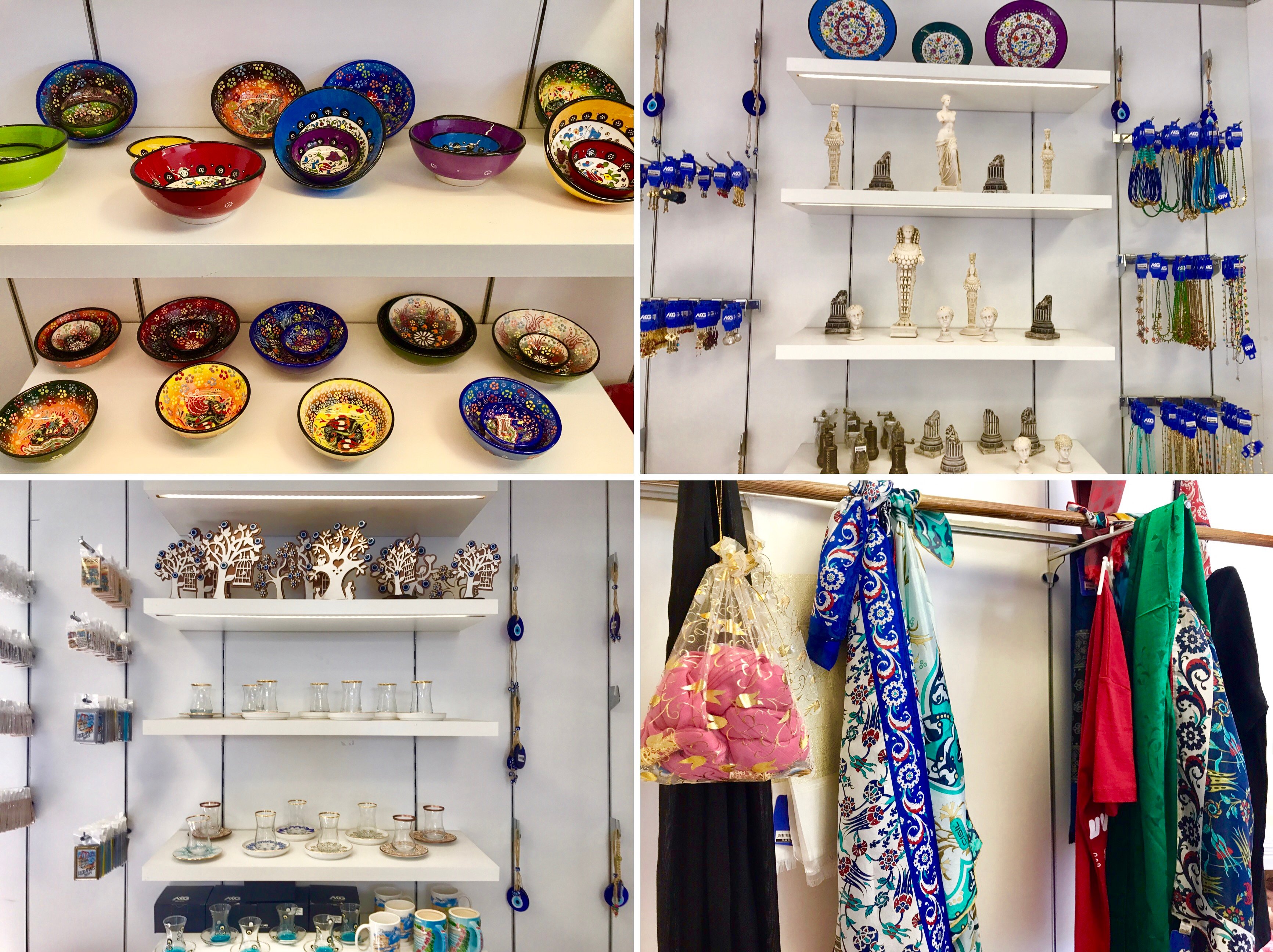

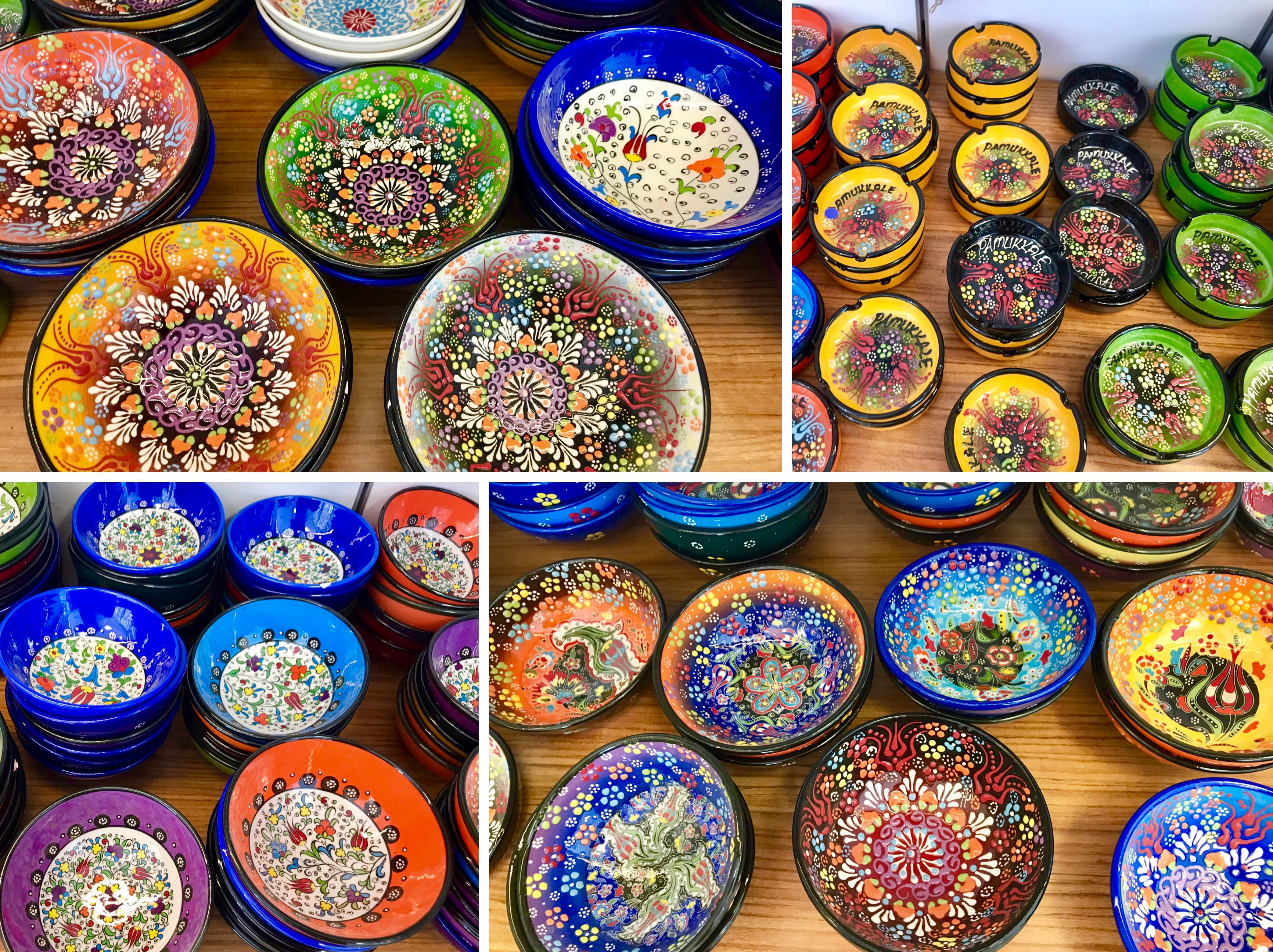
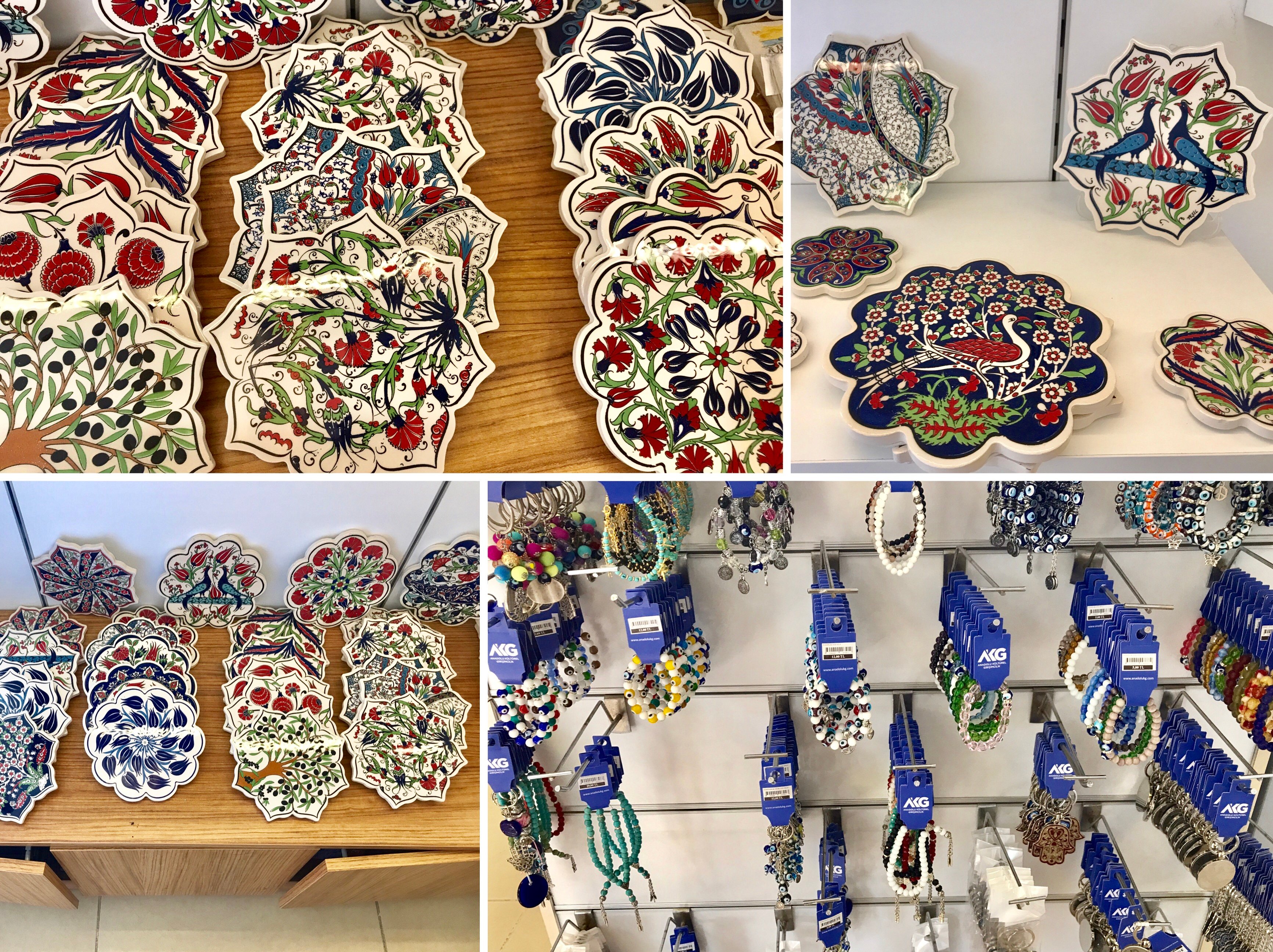
My first taste of Dondurma (Turkish ice cream).
The vendor was very tricky and refused to let me get my ice cream! Each time he'd ask me to hold my cone out, he'd woosh the ice cream away! Eventually he had enough with his fun and I could finally taste the thick textured ice cream. I must say, the reputation of Turkish ice cream precedes itself. I was thoroughly satisfied and I had a lot of fun too!

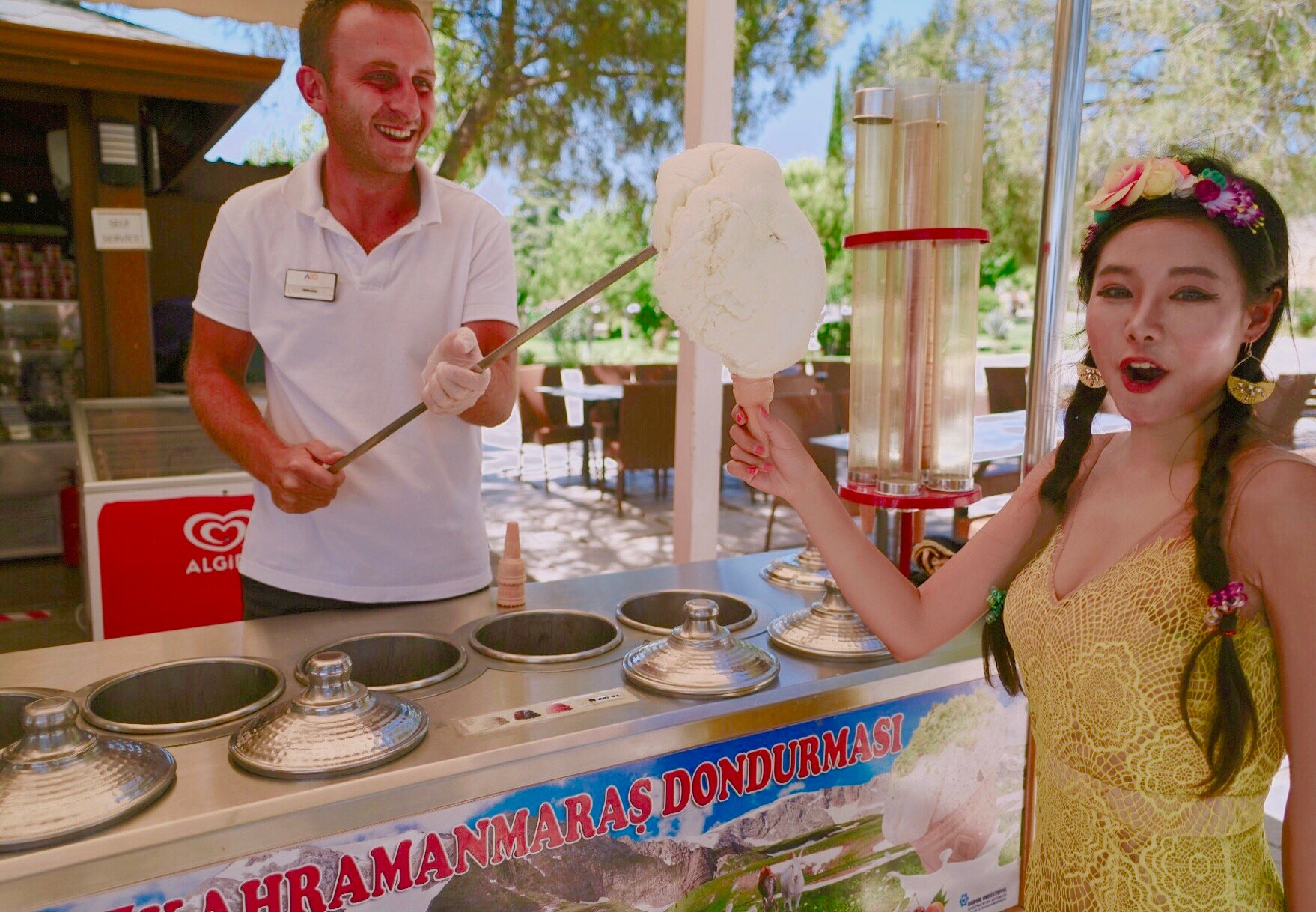
Check out the video !
Thank you for joining me on this very long edition of Travel with me to the Antique (Cleopatra) pool, Ancient Theatre and Museum. This concludes my visit to Hierapolis and Pamukkale and I hope you had as much fun joining me on my adventures here as I have presenting it all to you!
As always, I appreciate an upvote if you liked the post, a follow if you want to stay up to date with my activities, and please do leave a comment to let me know what you think!
当你自由自在的在水中游着泳,游过身边那千年前沉入水底的断壁残垣,会是什么样的感受呢?今天我想带大家去探索土耳其希拉波利斯考古遗址最特别的地方——古池。这也是我人生中最特殊的一次游泳经历,为什么这么说呢?还是赶紧带大家走进古池探索一下吧。
记得之前我们在一起探索棉花堡时,有提到过,这里最早由罗马人发现,是当时的达官富贵休闲消遣的场所。而古罗马时期温泉疗养中心的大浴池,在当时被奉为圣池,所以那时候的人们都以能够来到这里泡温泉,并安享晚年为荣。最终罗马人决定在棉花堡上建起这座庞大的温泉城市,也就是山顶的希拉波利斯遗址。希拉波利斯古城是我认为土耳其最值得一看的古城,而这个古池正是位于希拉波利斯考古遗址的中心。来这里之前,我就一直听说最著名的除了棉花堡,就是温泉。今天终于能亲自感受下千年前古人们为之向往,神圣又神秘的古池了,心情好激动。如今进入古池下水游泳,需要支付35里拉的费用。这个门票做的好有个性,很像纸币的感觉,所以我决定把它收藏。希拉波利斯古城曾经繁盛一时,各种雄伟的大型建筑,神殿完备,可惜当时频发的地震不断摧毁着这座城市,在历经1000多年的辉煌后,这座古城的最后支柱还是在1334年的大地震中倒塌,居民们也被迫离开这曾经住了千年的故乡。也正是那次大地震,让损毁的巨大大理石圆柱沉没于池水之中,才有了如今人们在池水里与千年古迹共游的场景。
我迫不及待去跟衣室换了衣服,走进池水中,就感觉一股暖流,古池的水温,大约36度,对于土耳其炽热的夏天,水温还真的有些过高,想必冬天应该舒服多了。继续走在水中,水位慢慢漫过身体。当走过一个桥洞时,我惊讶的发现洞里有个鸟窝,三只漂亮的小鸟齐刷刷的望着同一个方向,没想到鸟妈妈觅食回来分头喂给三只baby鸟的场景正好被我撞见,多么幸运呀。更让我充满好奇的,还是脚下踩着的历史古迹石柱,我不禁低头仔细的观摩它们,发现这池里的水质清澈见底,而这些大理石圆柱有些带着凹槽,大多数都雕工完美,尽管历经数千年的风吹雨打,依旧显现出完美的模样。池畔种满了夹竹桃,让整个池水绿意盎然,我突发奇想,飘在水中,决定用心灵和身体一起感受这下沉千年古迹的魅力,Tania也一起加入了我。飘在水中,任由身体沉浮,偶尔还有徐徐微风,舒服极了,不知不觉也快到了黄昏。泡完温泉,坐在池边的咖啡馆休息,尝一次人生必试的土耳其冰激淋,想象着古时王公贵族的奢华生活,真是不虚此行。
在土耳其吃冰激淋是一个有趣的经历,冰激淋小哥把简单的圆筒冰激淋玩出了不一样的把戏,只看这花式挖冰激淋的方法,把大家逗得笑哈哈。小憩一下后,我们来到了希拉波利斯考古博物馆,它位于一个原始的罗马浴室内,里面分为3个独立展区,分别展出了大大小小的古代石棺、还有一些精美华丽的小型出土墓葬文物和古代雕像。走在这些历史文物当中,感觉自己也突然回到了古代,所以不由得学身边的雕塑摆了一个相同的姿势。出了博物馆,天色相近,趁着太阳落山的时间,我们爬上了古城的制高点,古希腊大剧场,这也是古城中保存最完整的遗址。它顺山势挖掘,是一座占地面积很大的露天圆形剧场。登高望远,俯瞰到整个古城遗址,还有远处的村庄和城市。剧院里传来人们歌唱的声音,虽然是土耳其文,但是我仿佛听懂了歌声里诉说的生命,夕阳的余晖披泽万物,更显出古城岁月的沧桑荒凉之感。希望大家喜欢我们一起探索的遗迹温泉池,还有蕴藏文化珍宝的博物馆,以及被岁月磨砺得愈加壮丽的希拉波利斯大剧院,之后还有更多有趣的旅游故事想要分享给大家。

